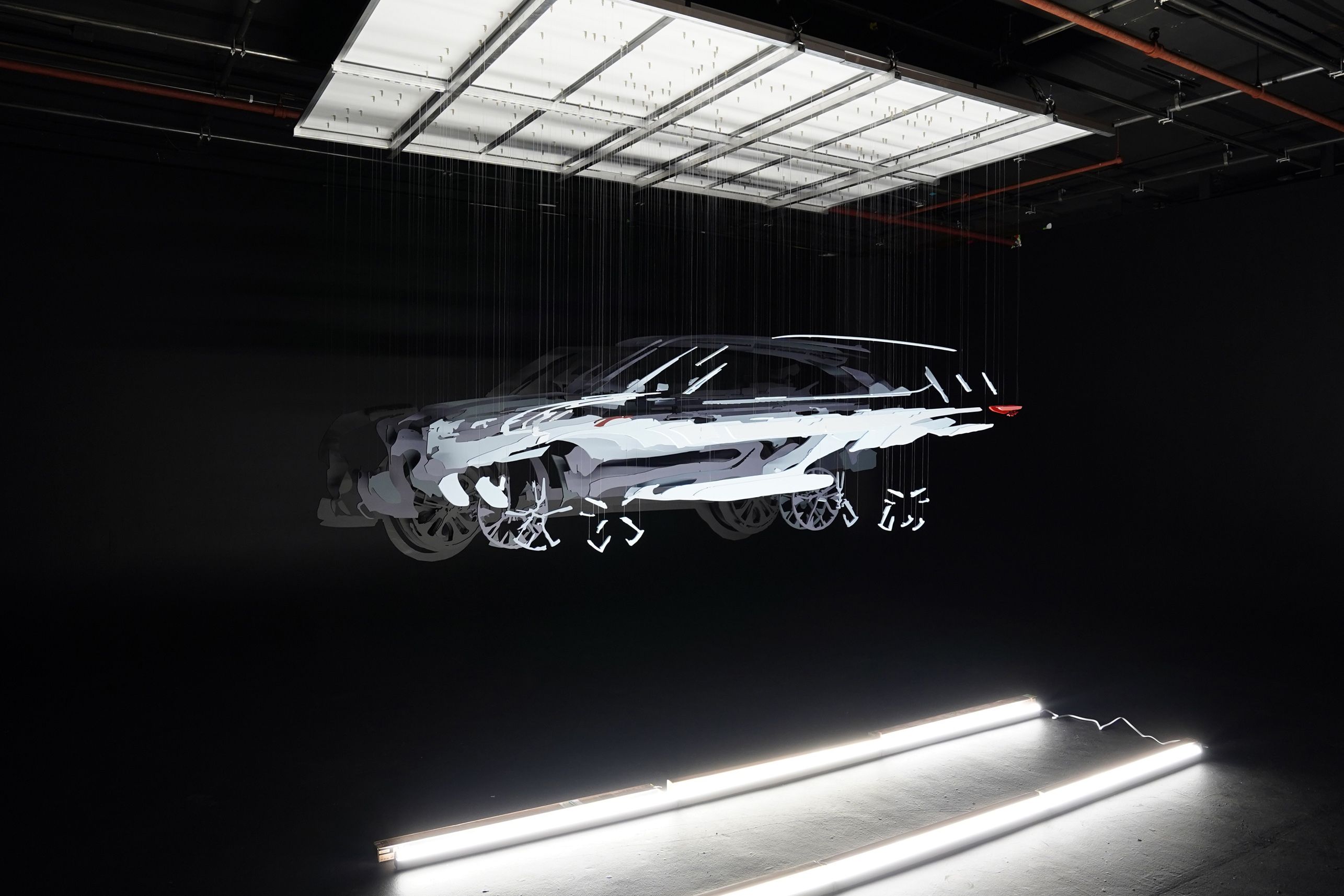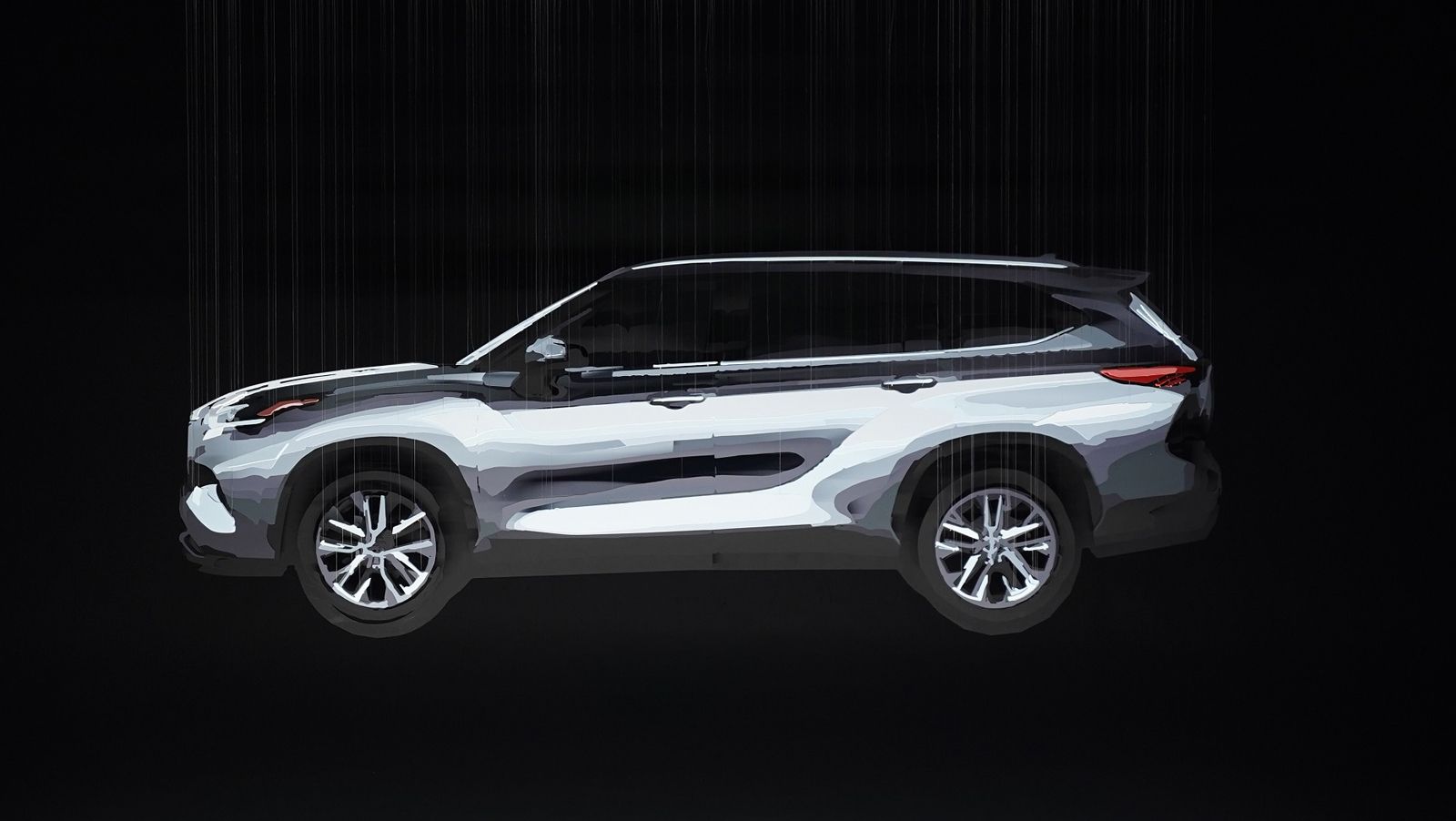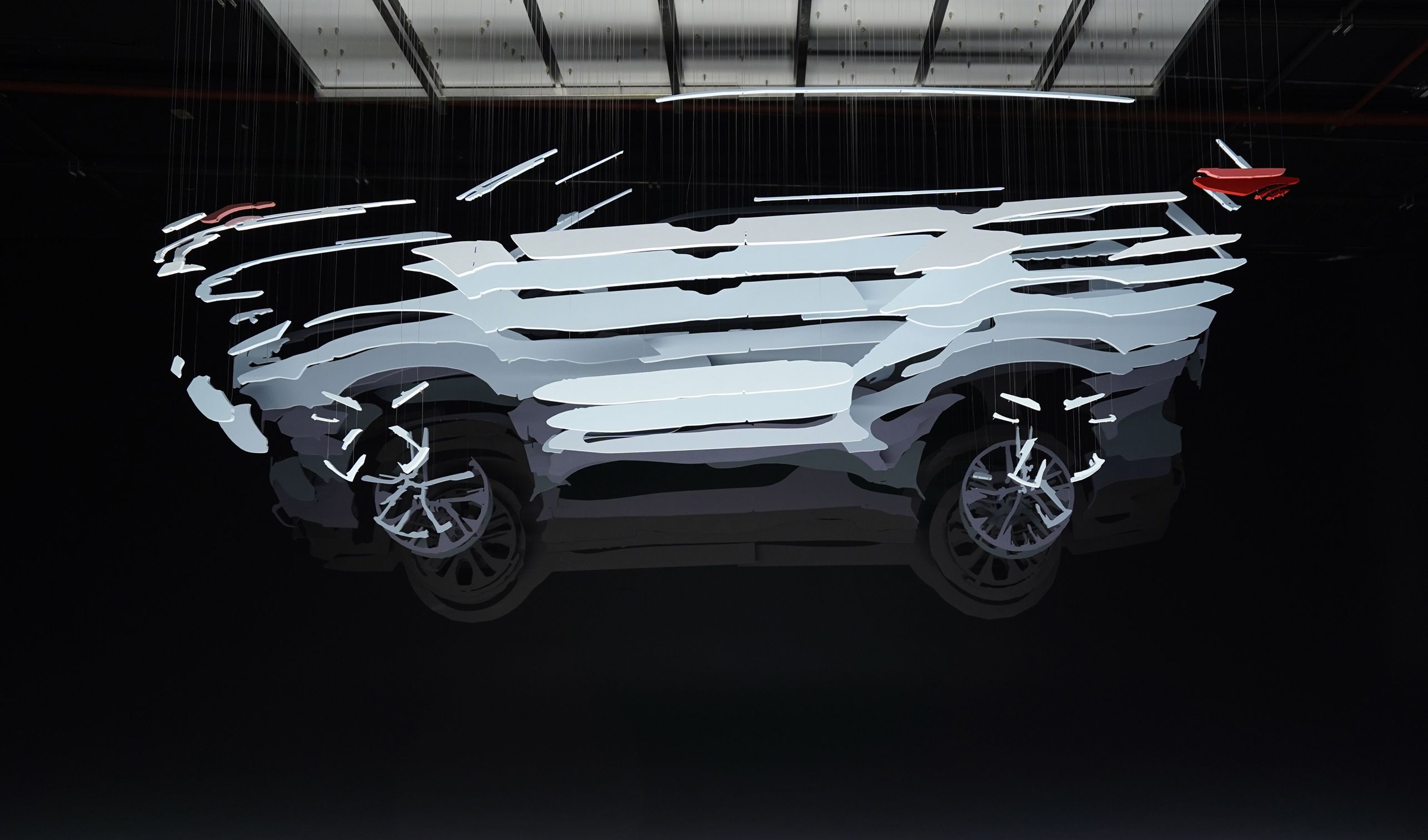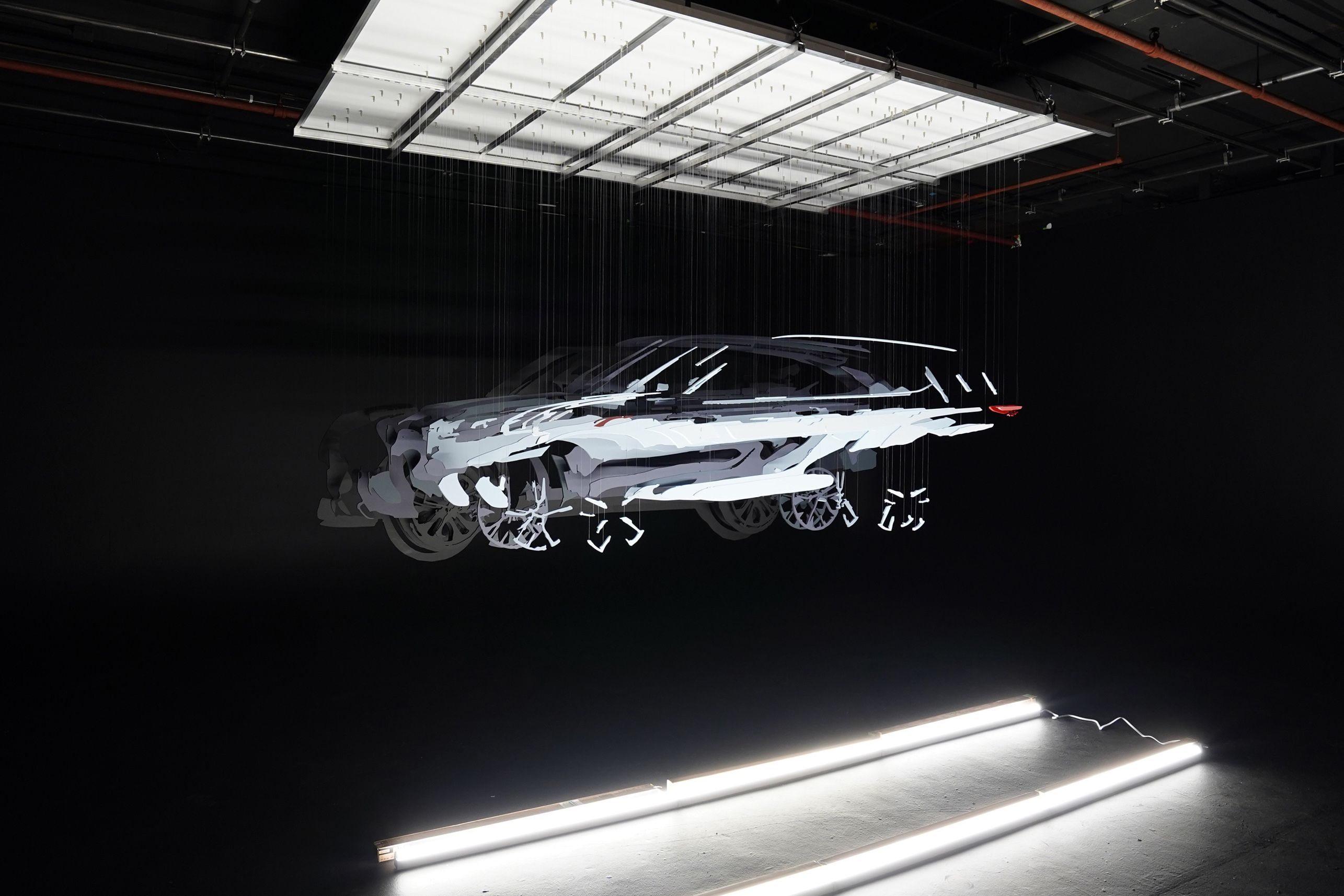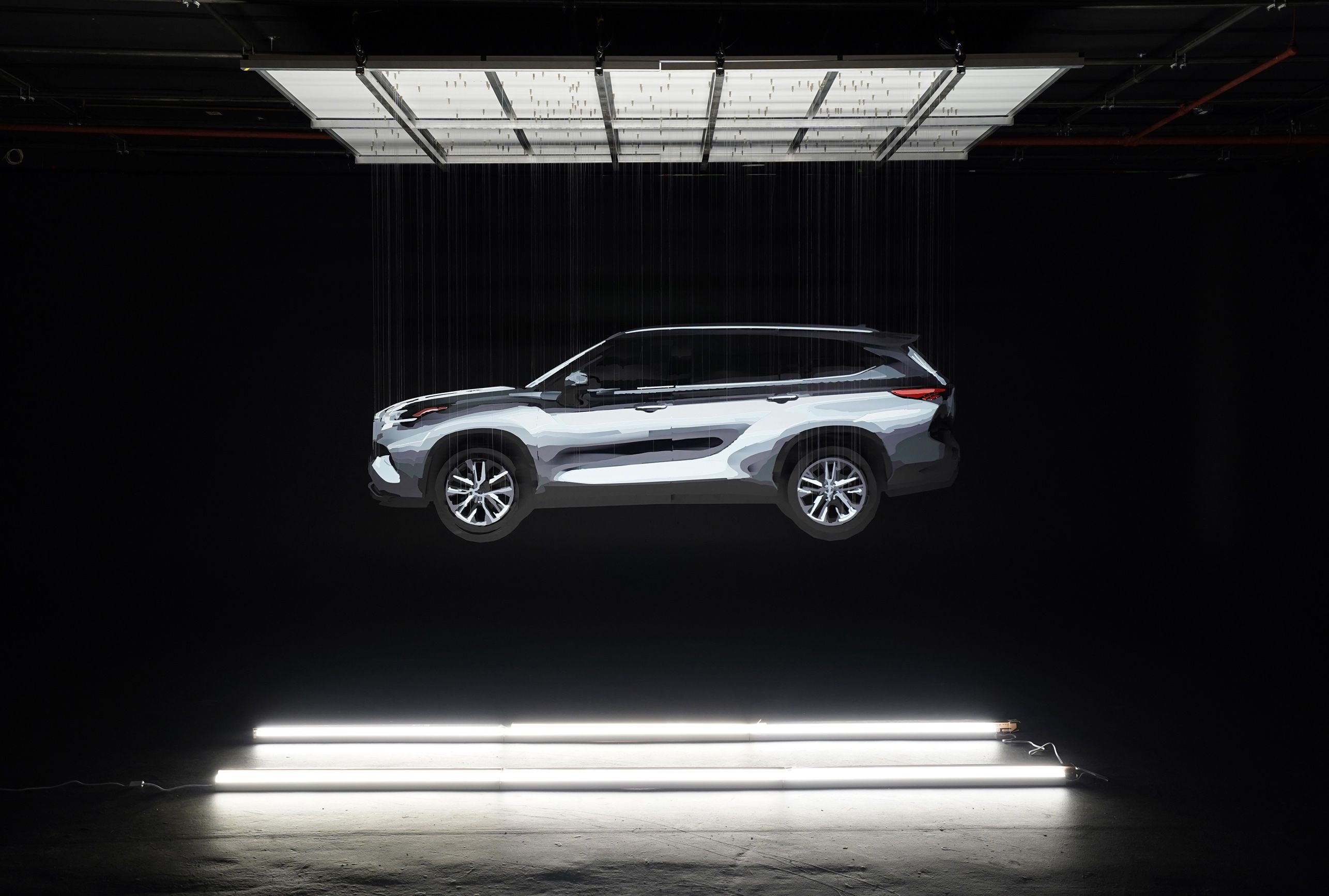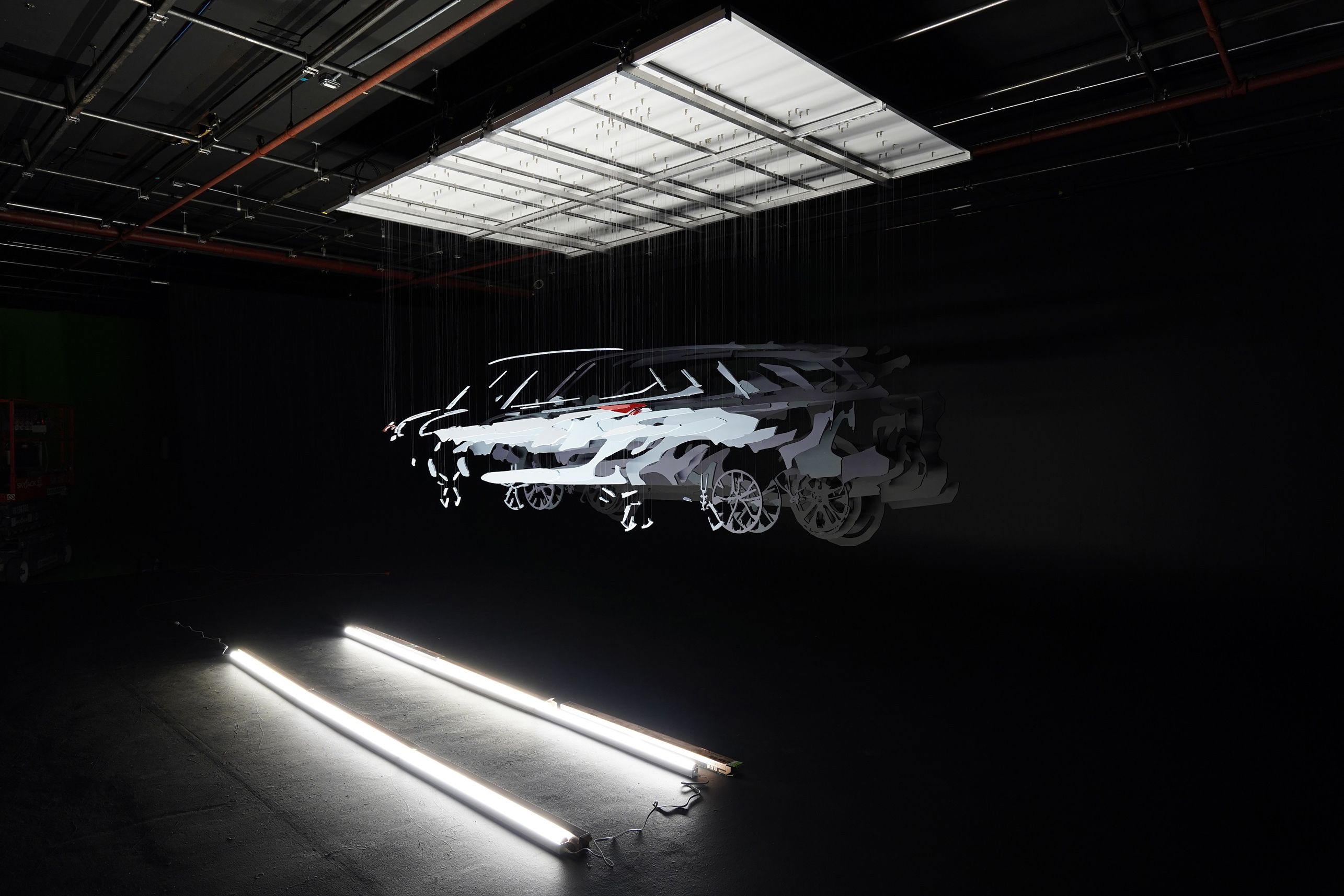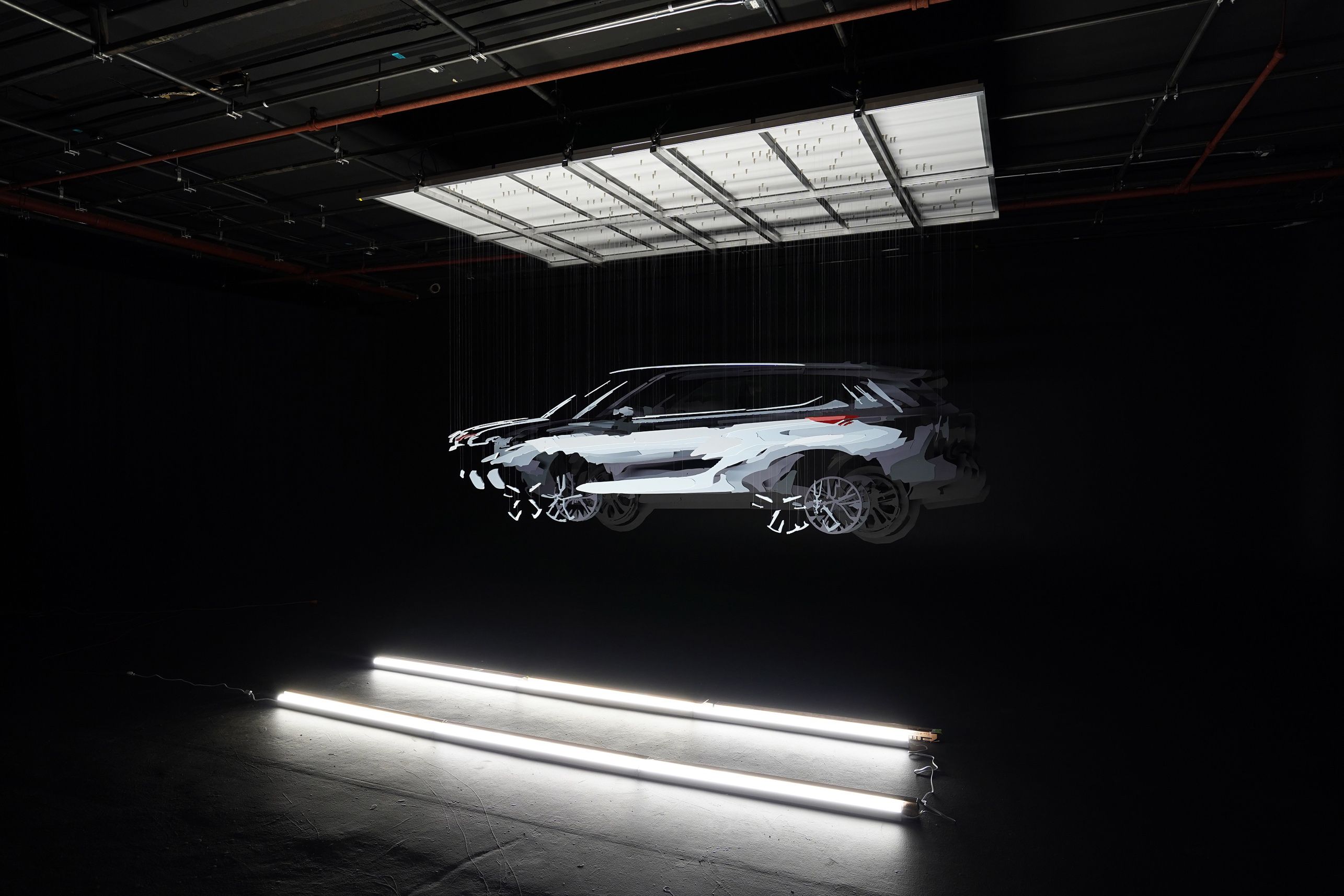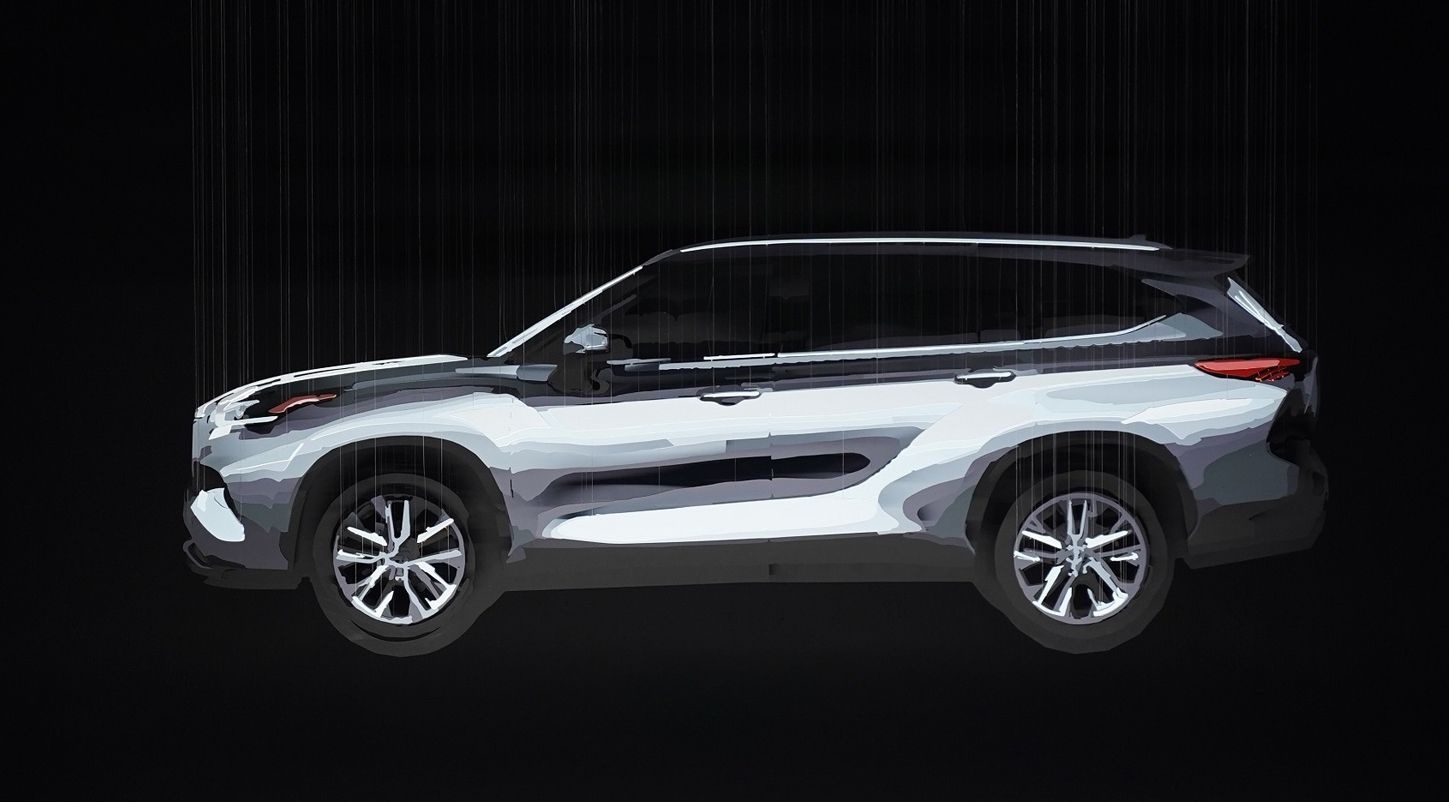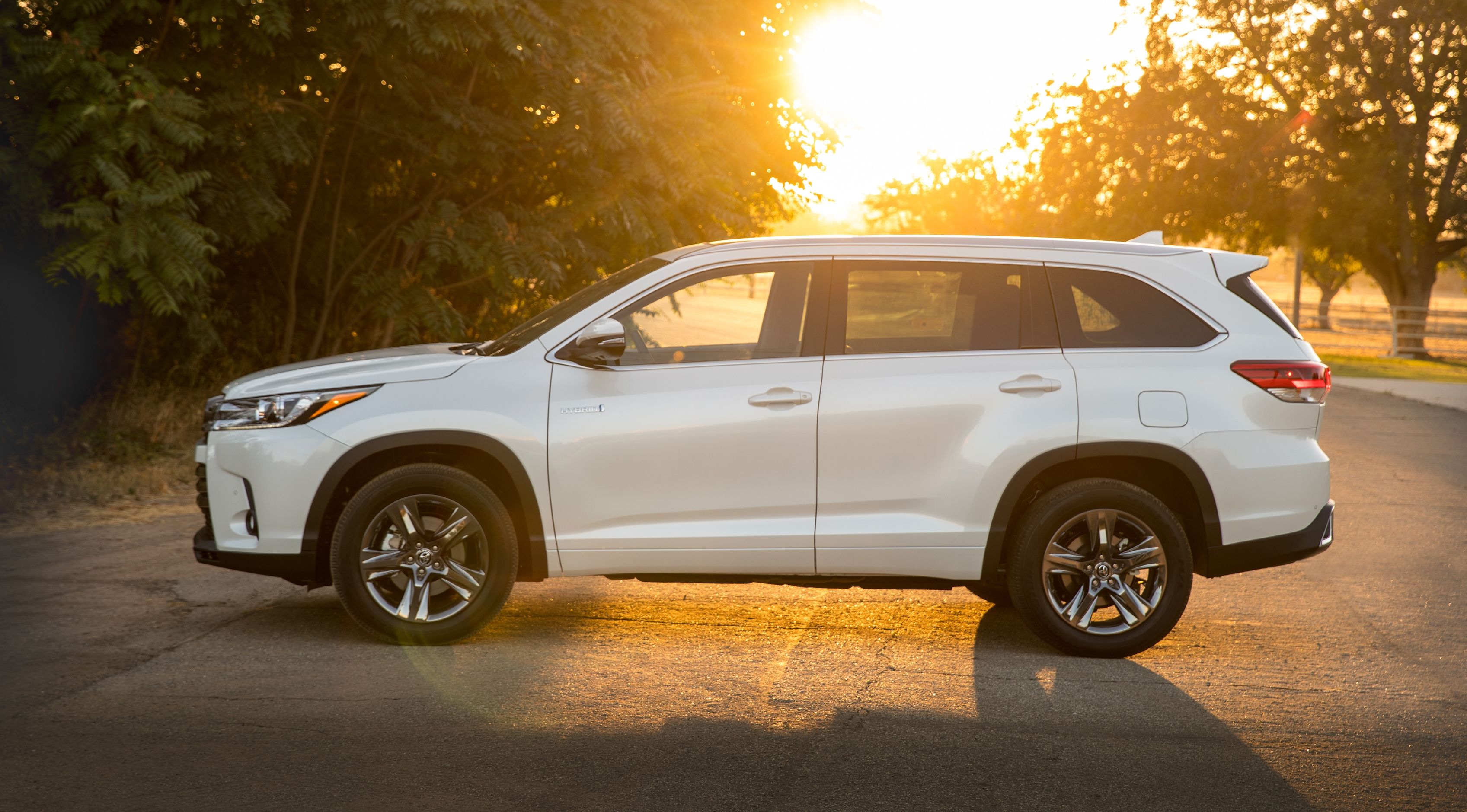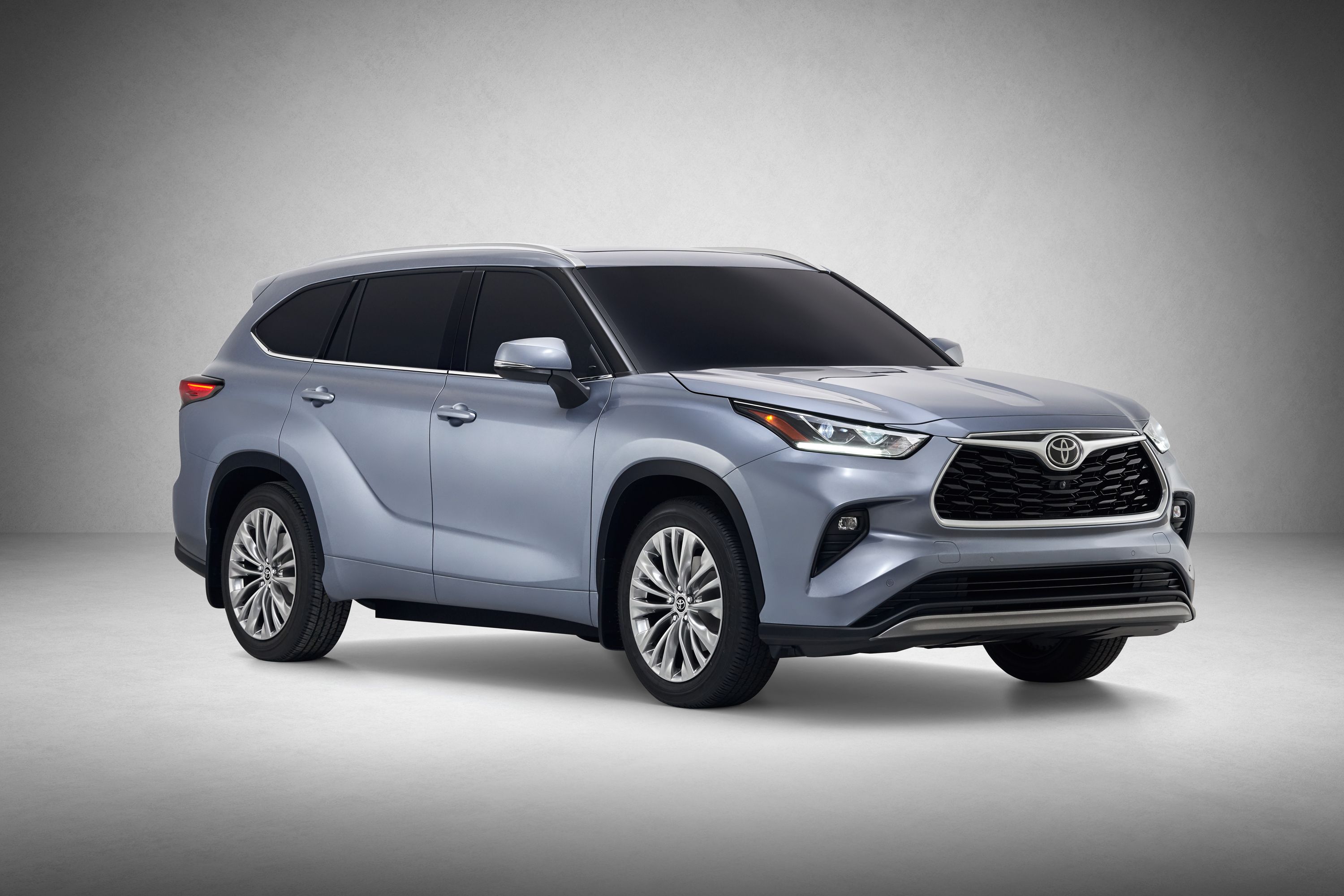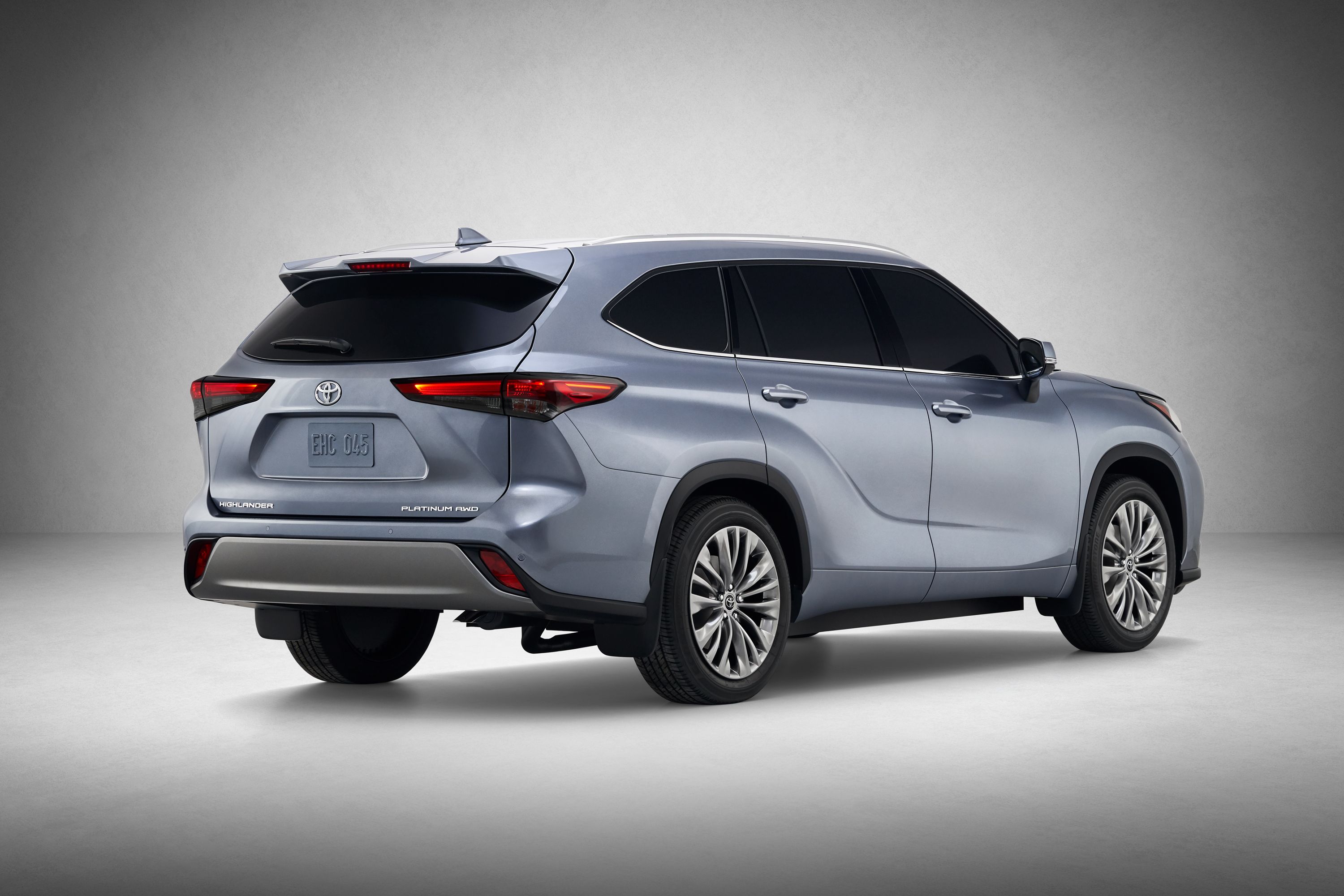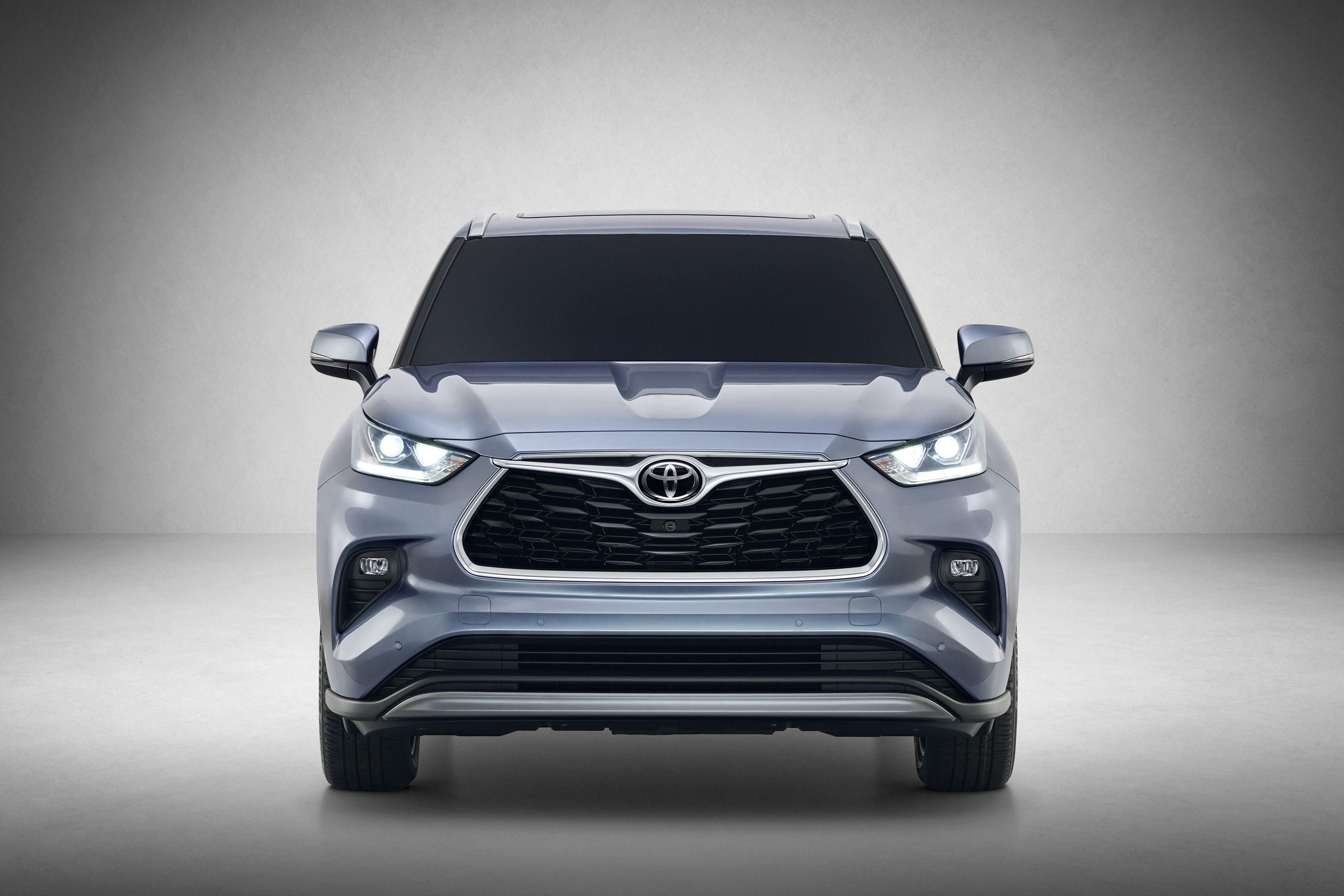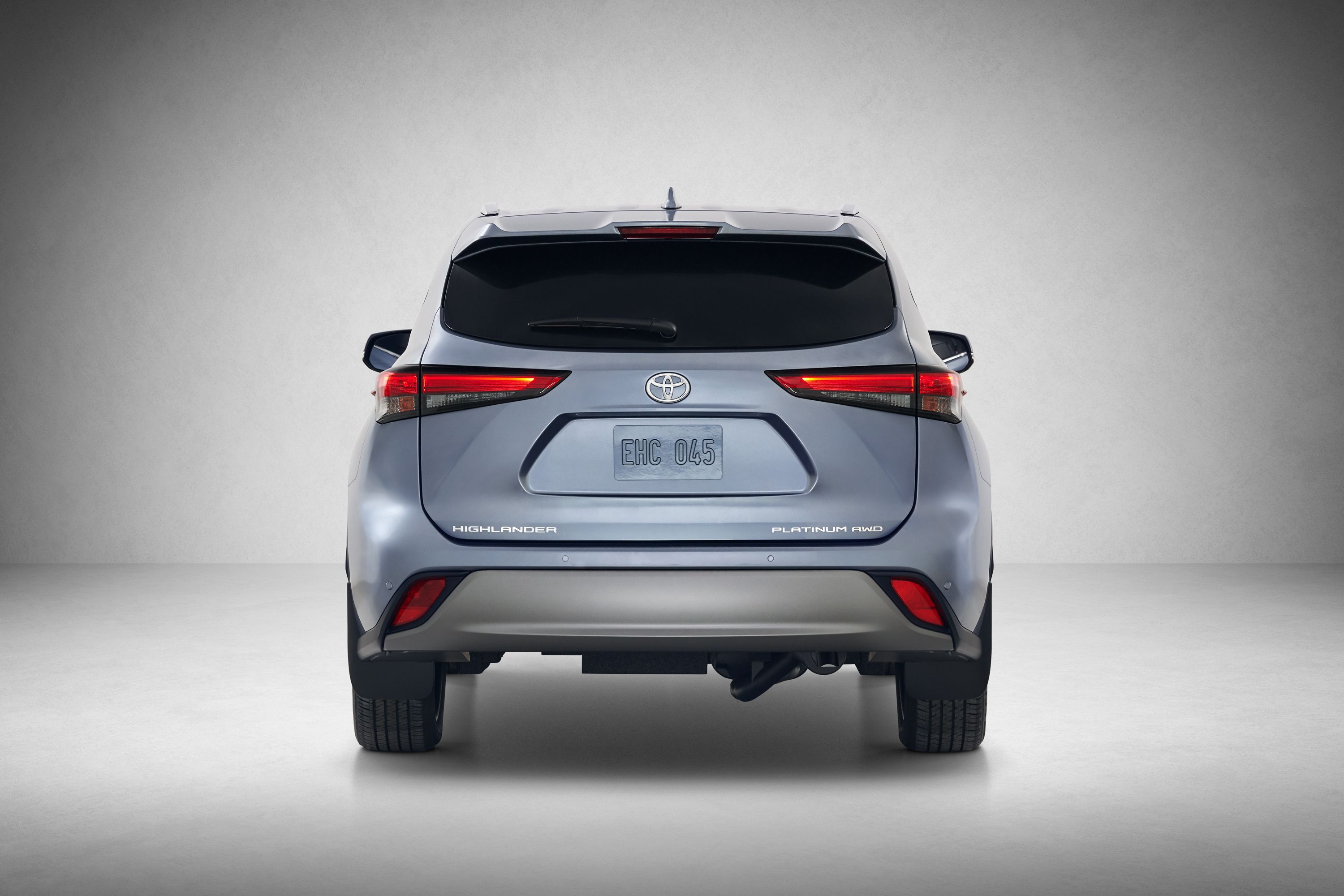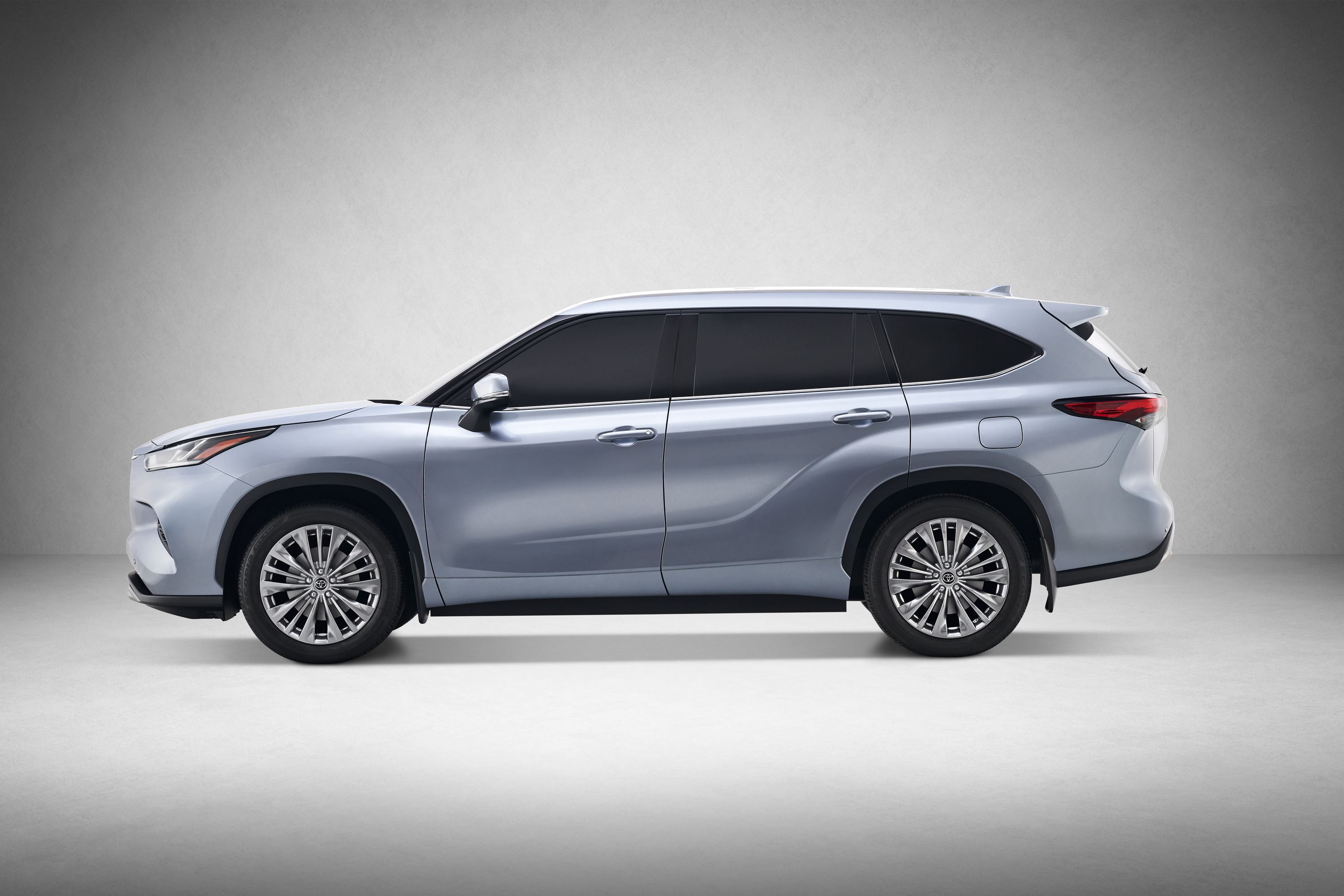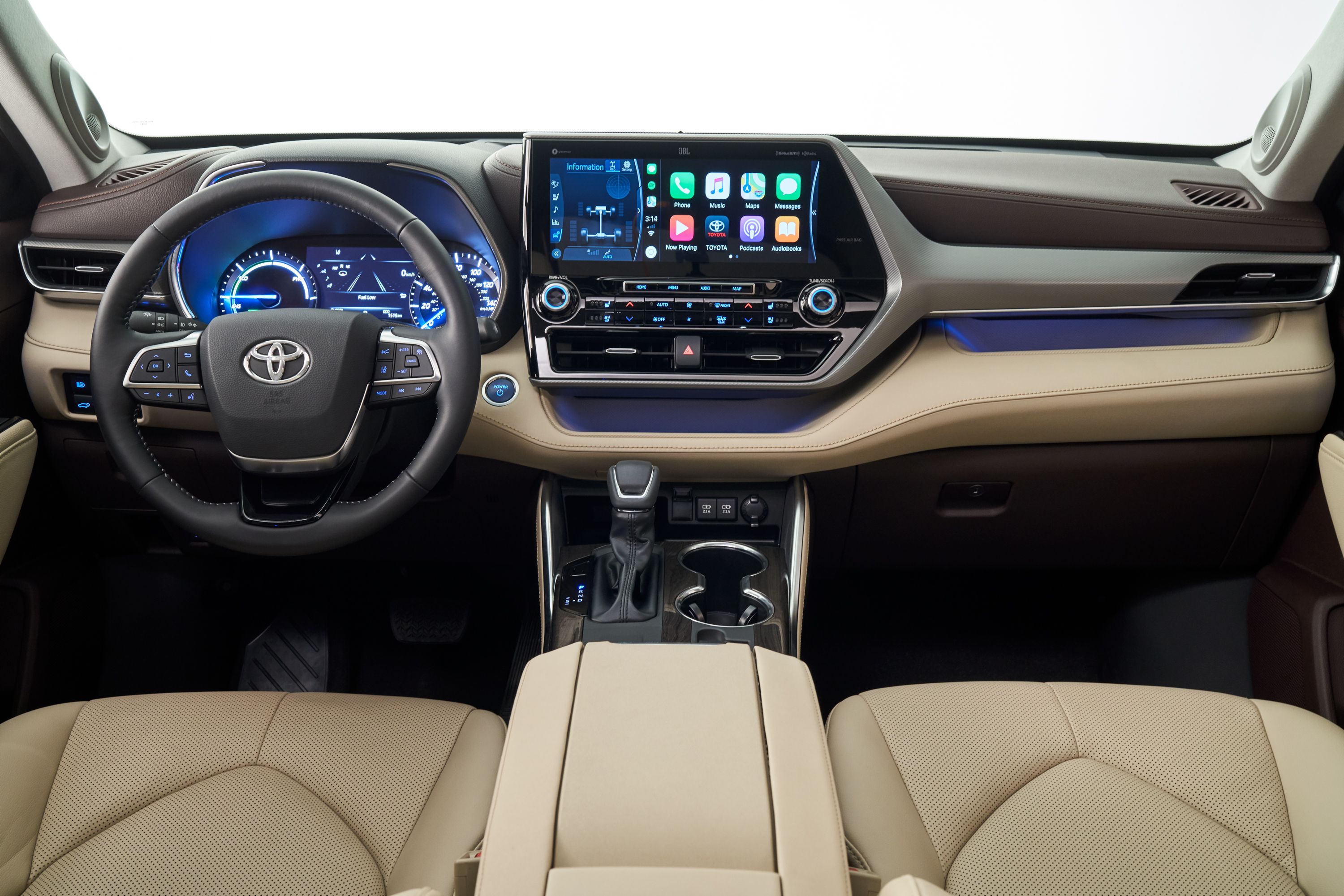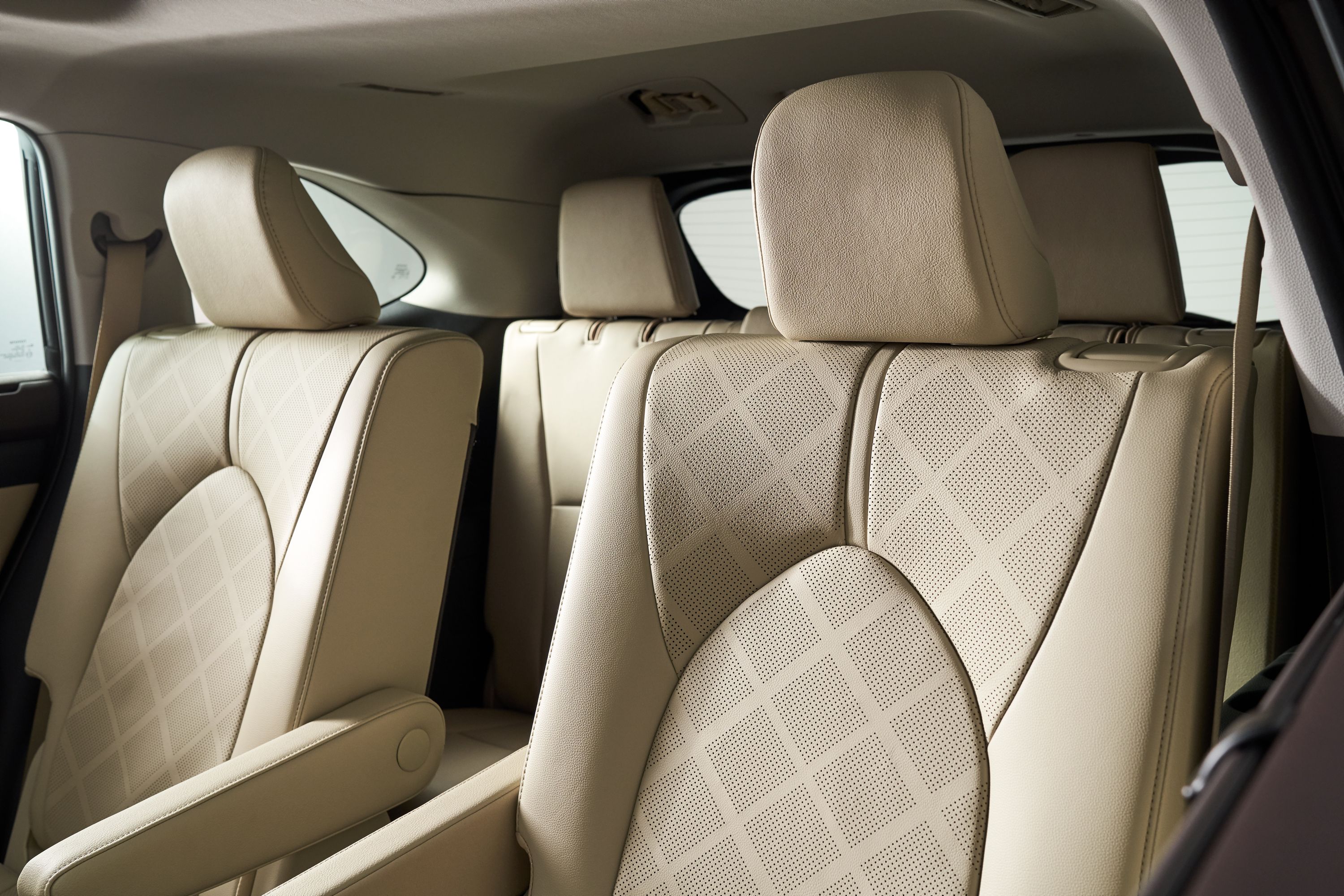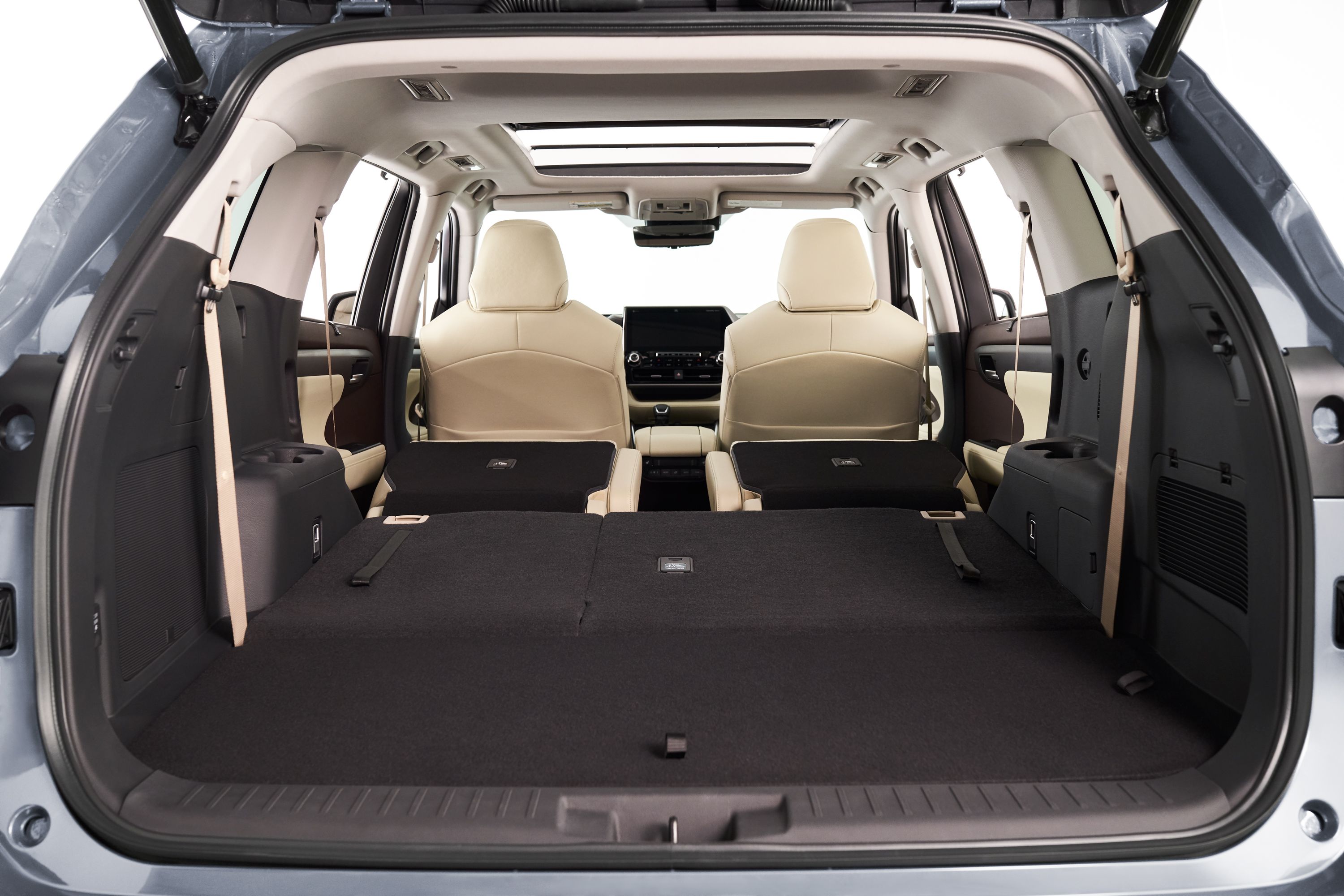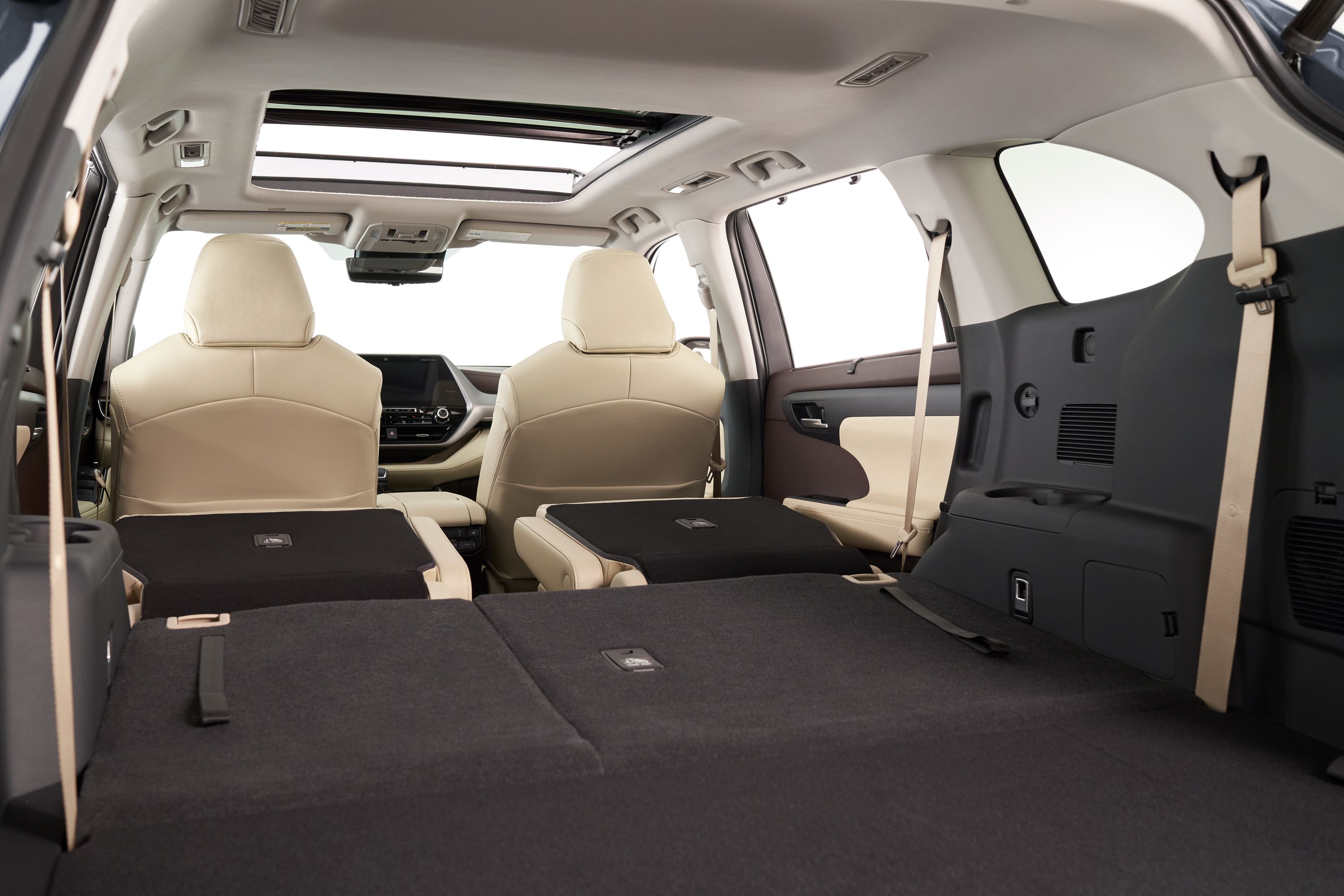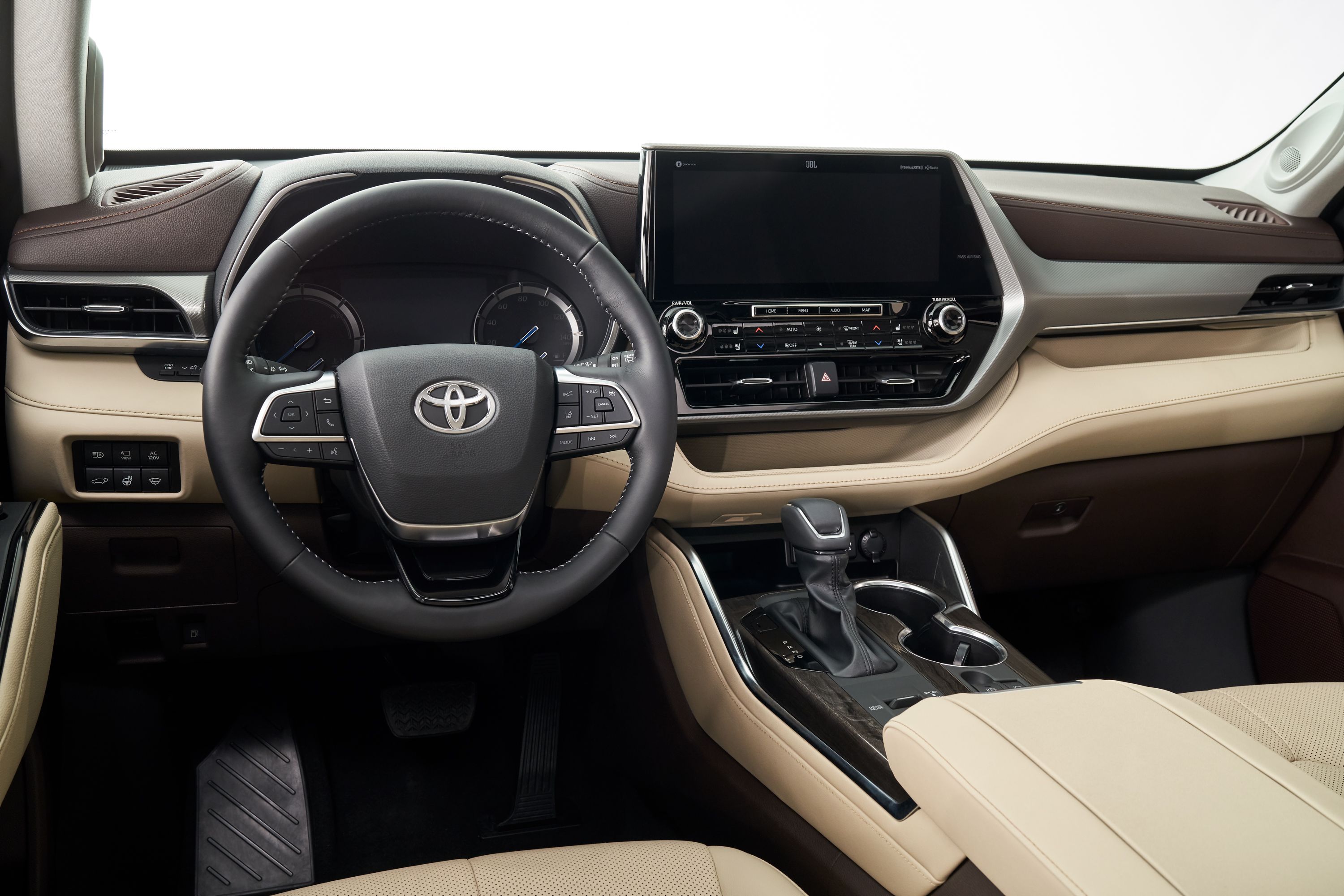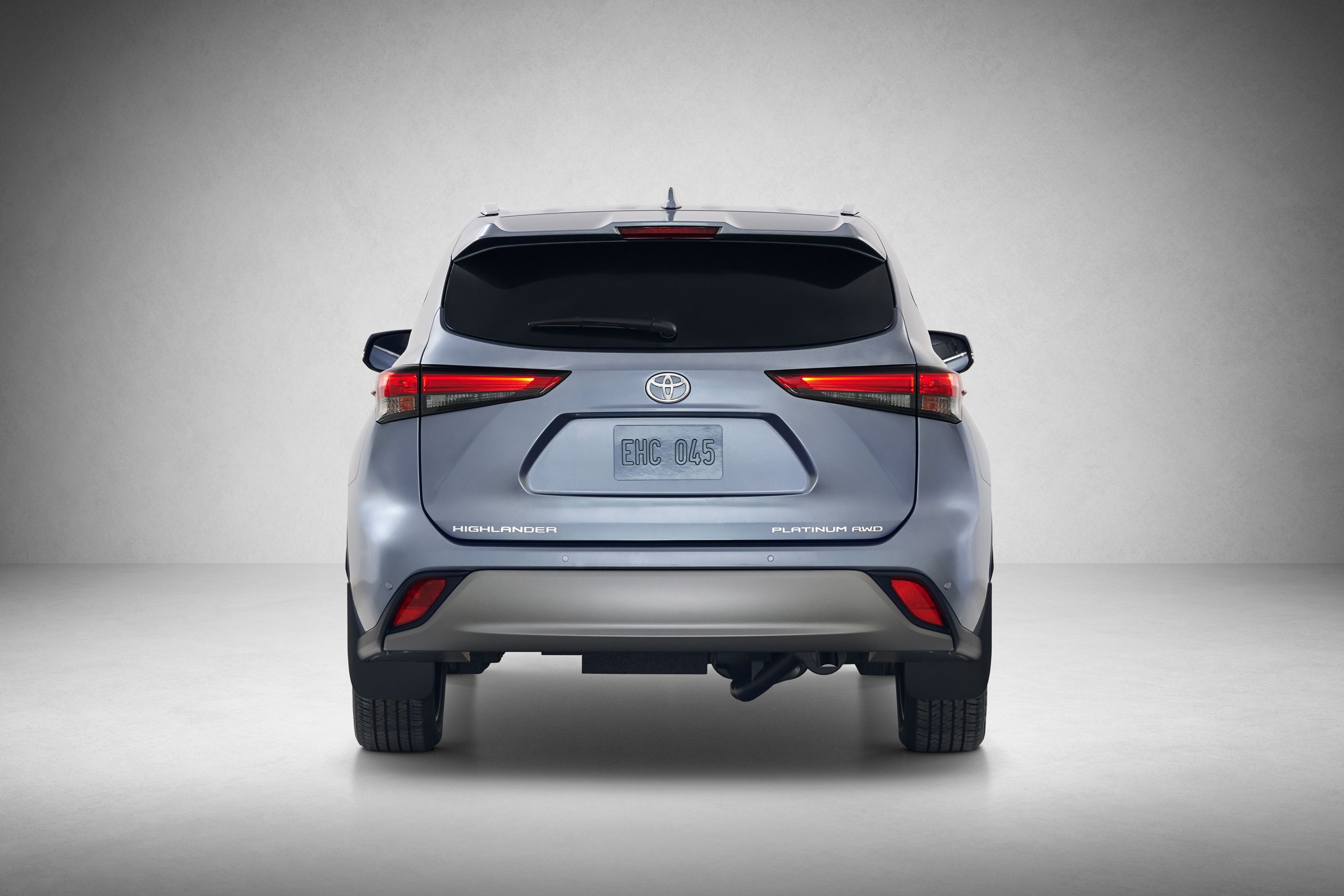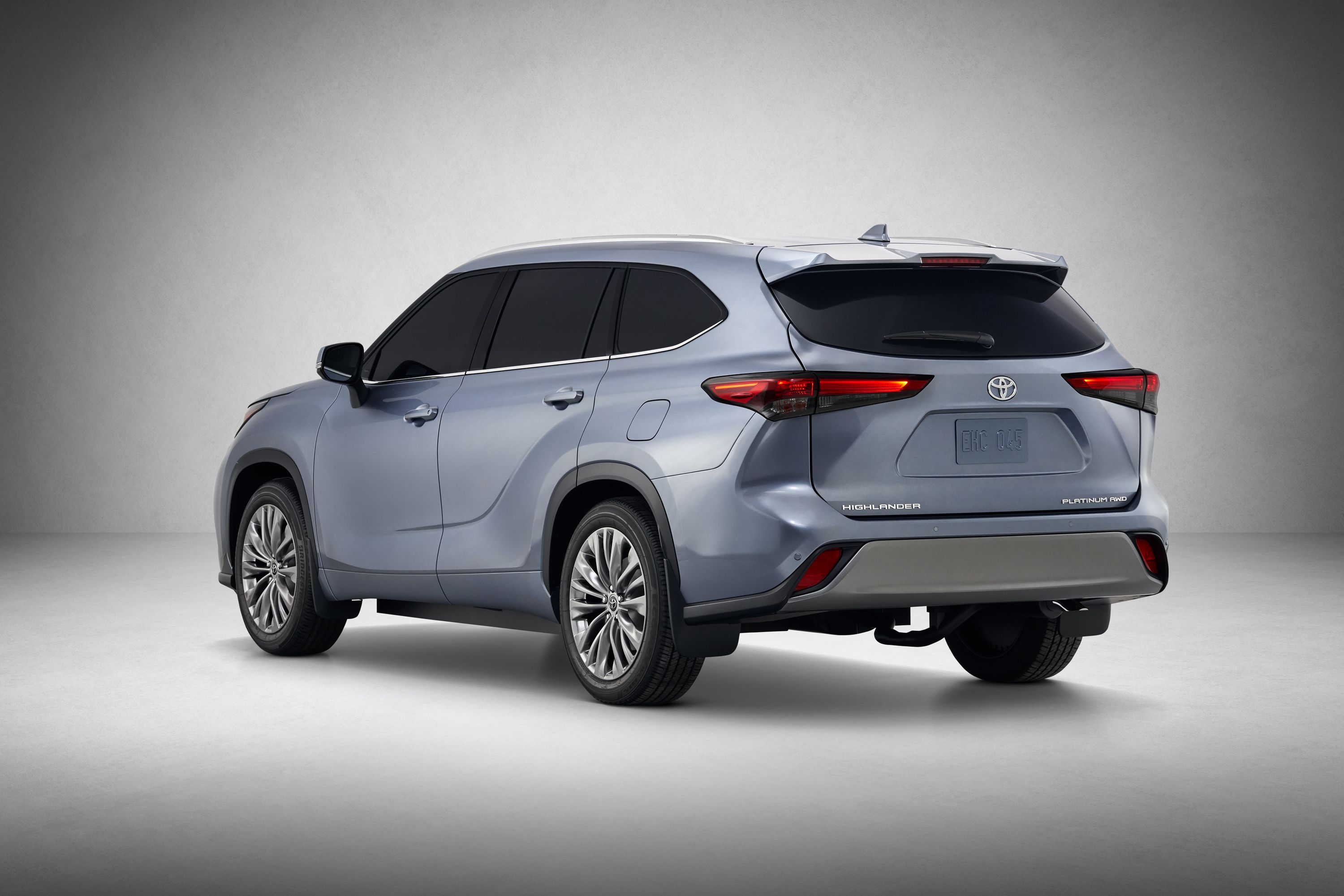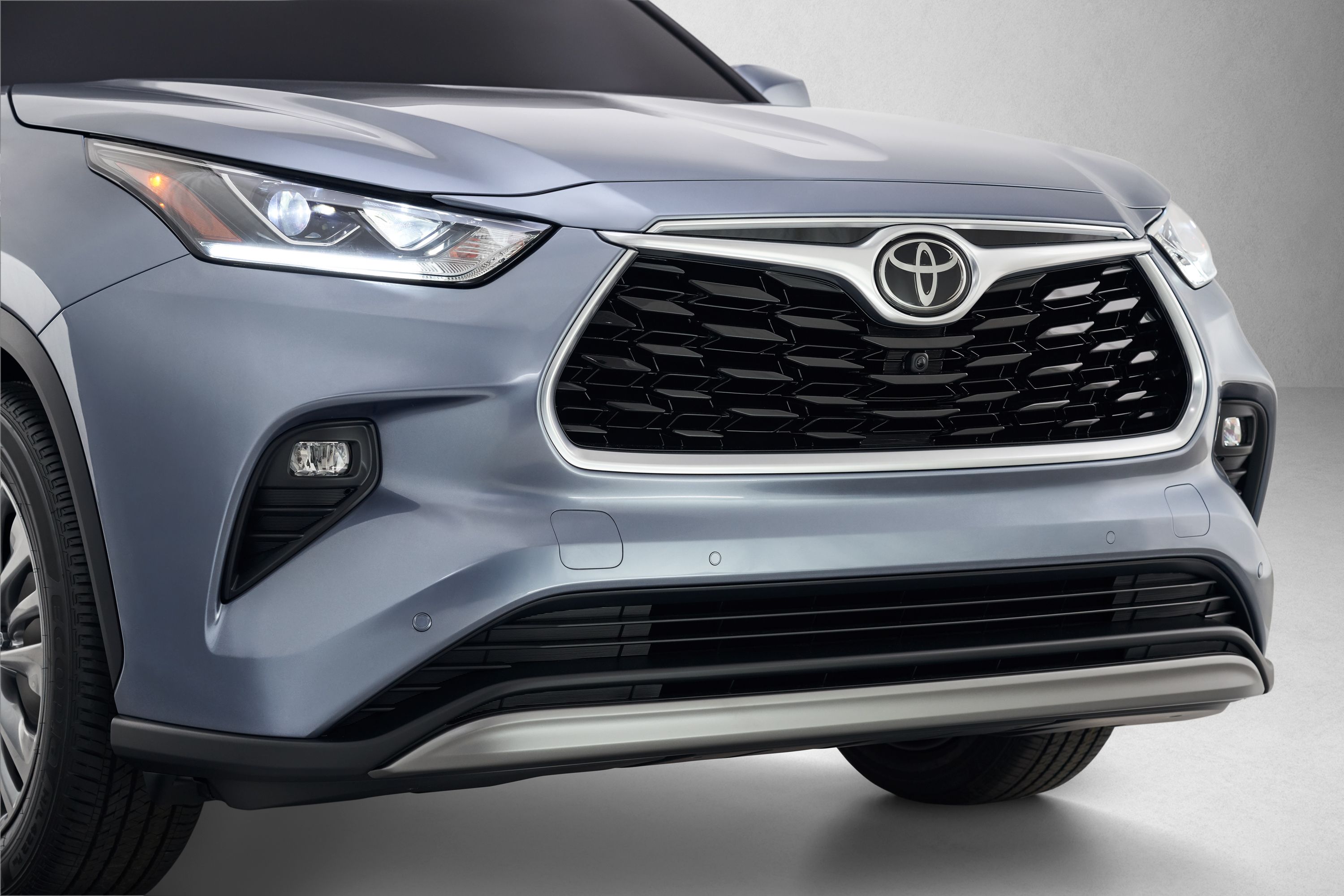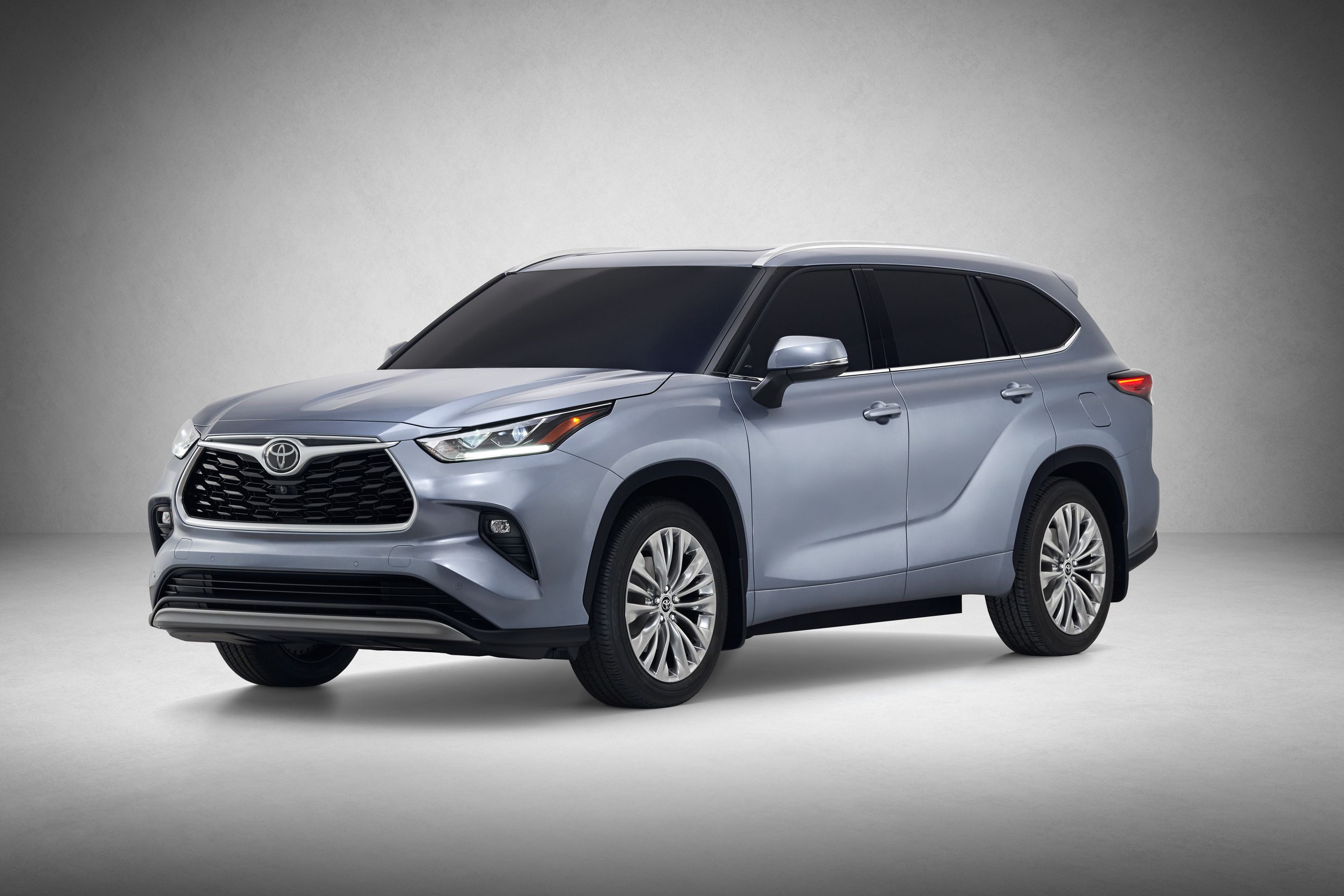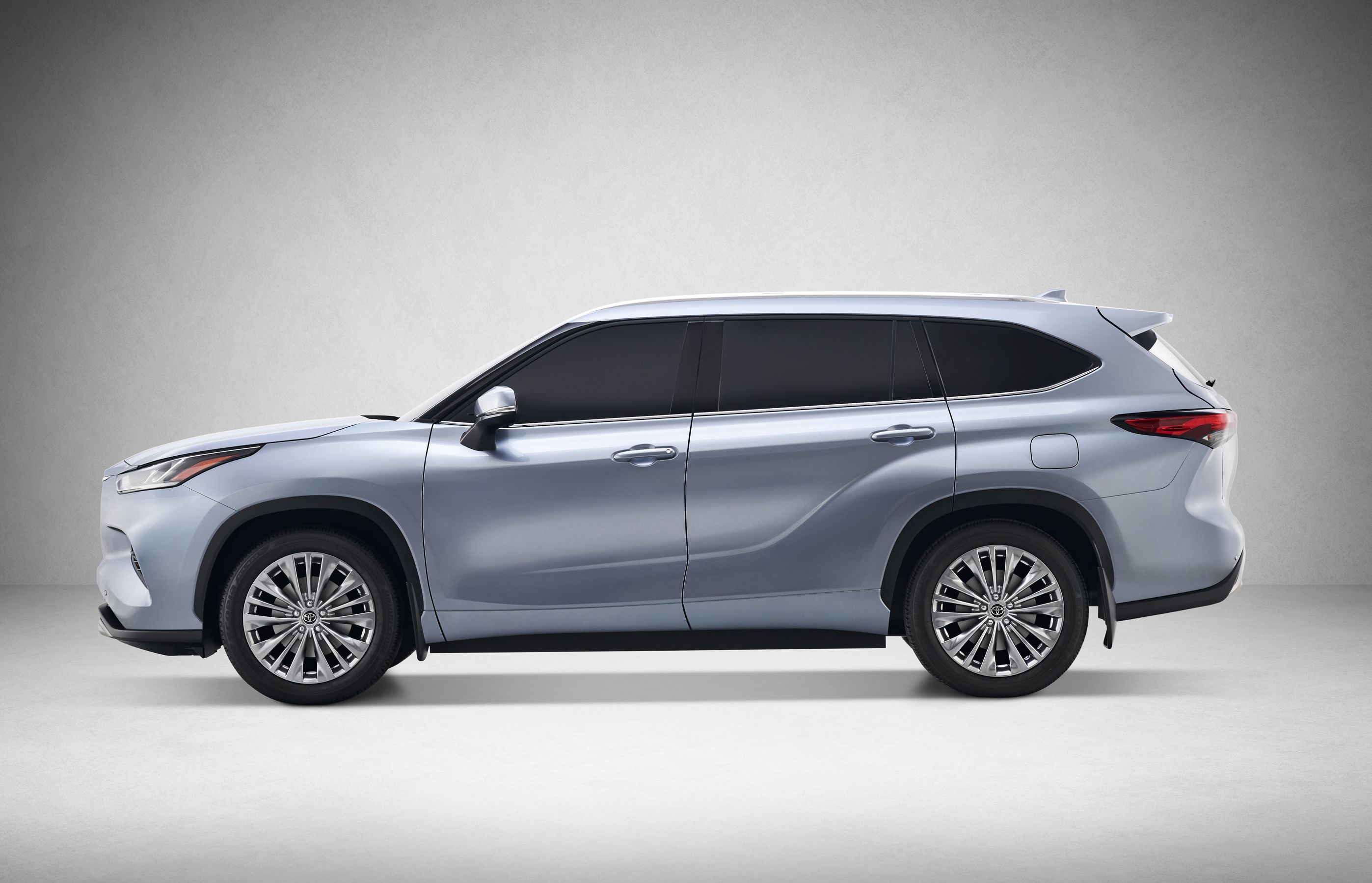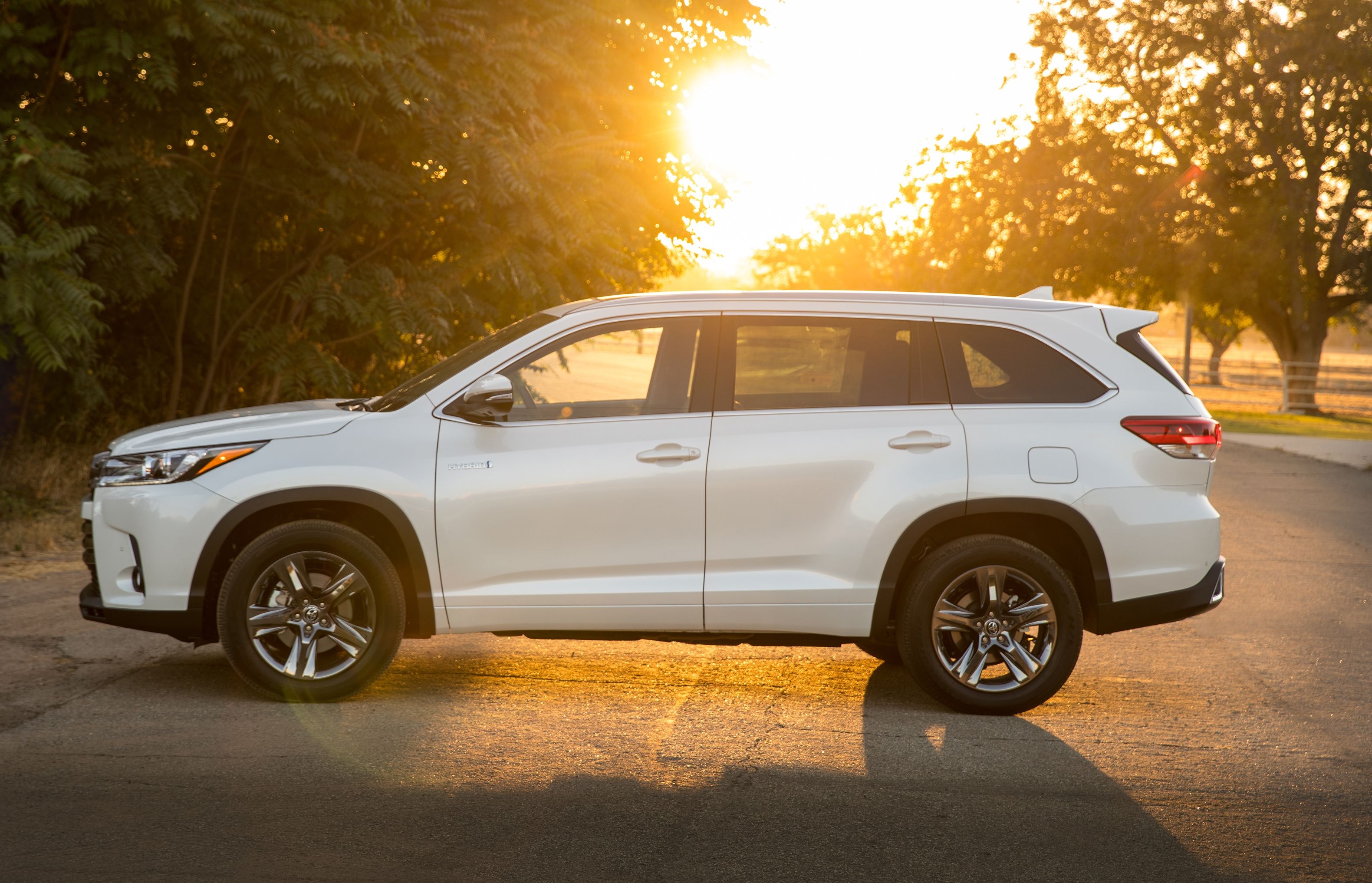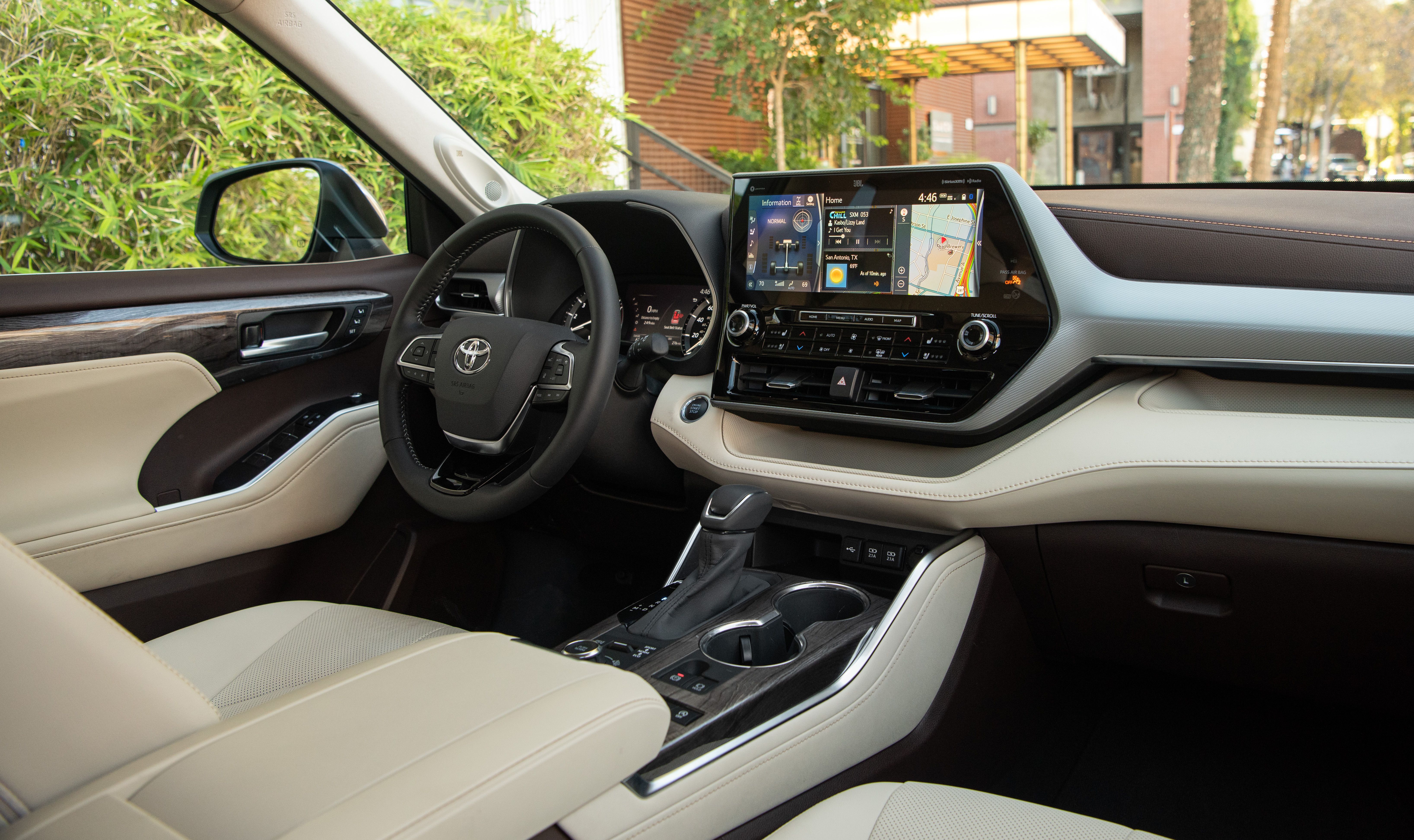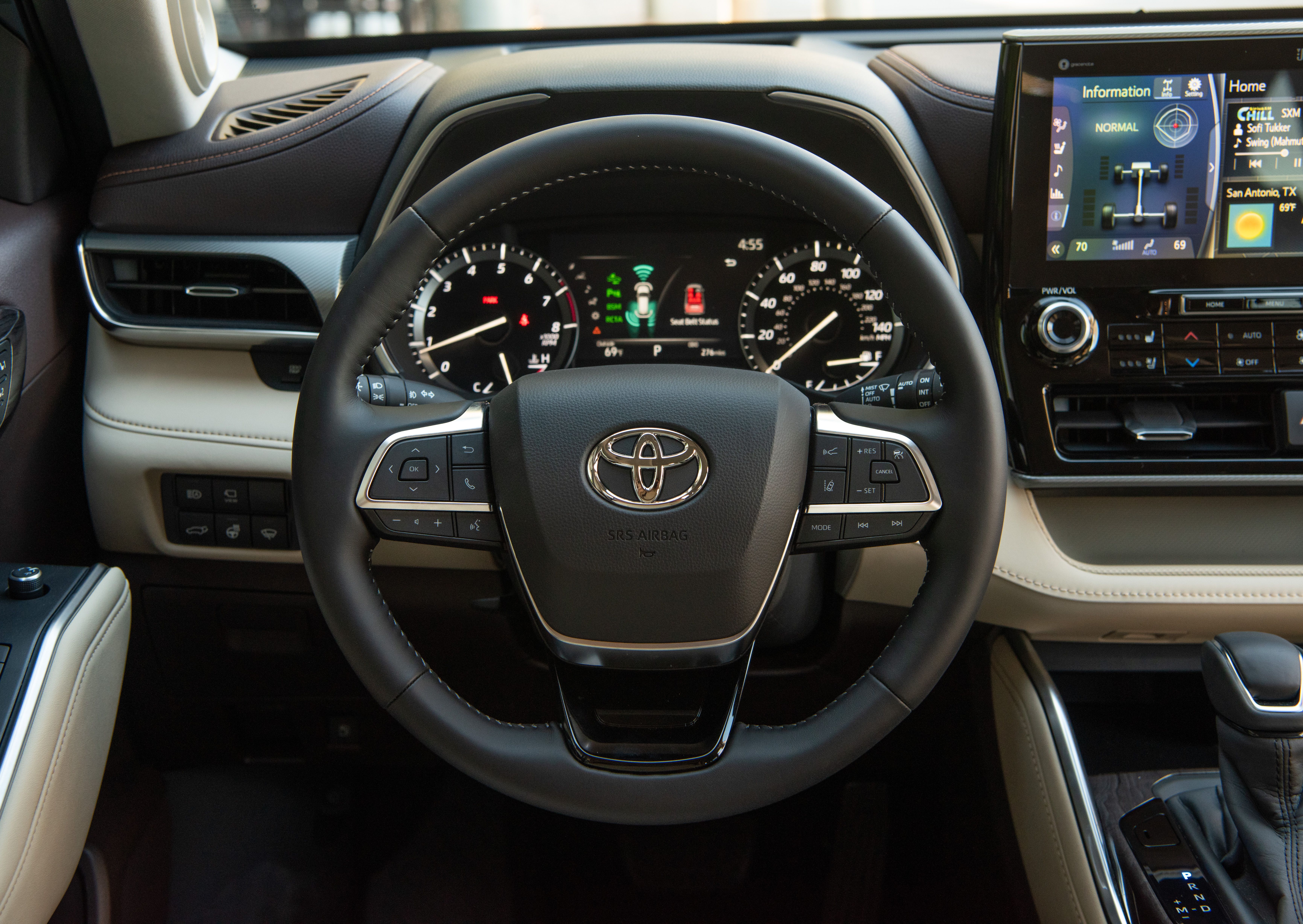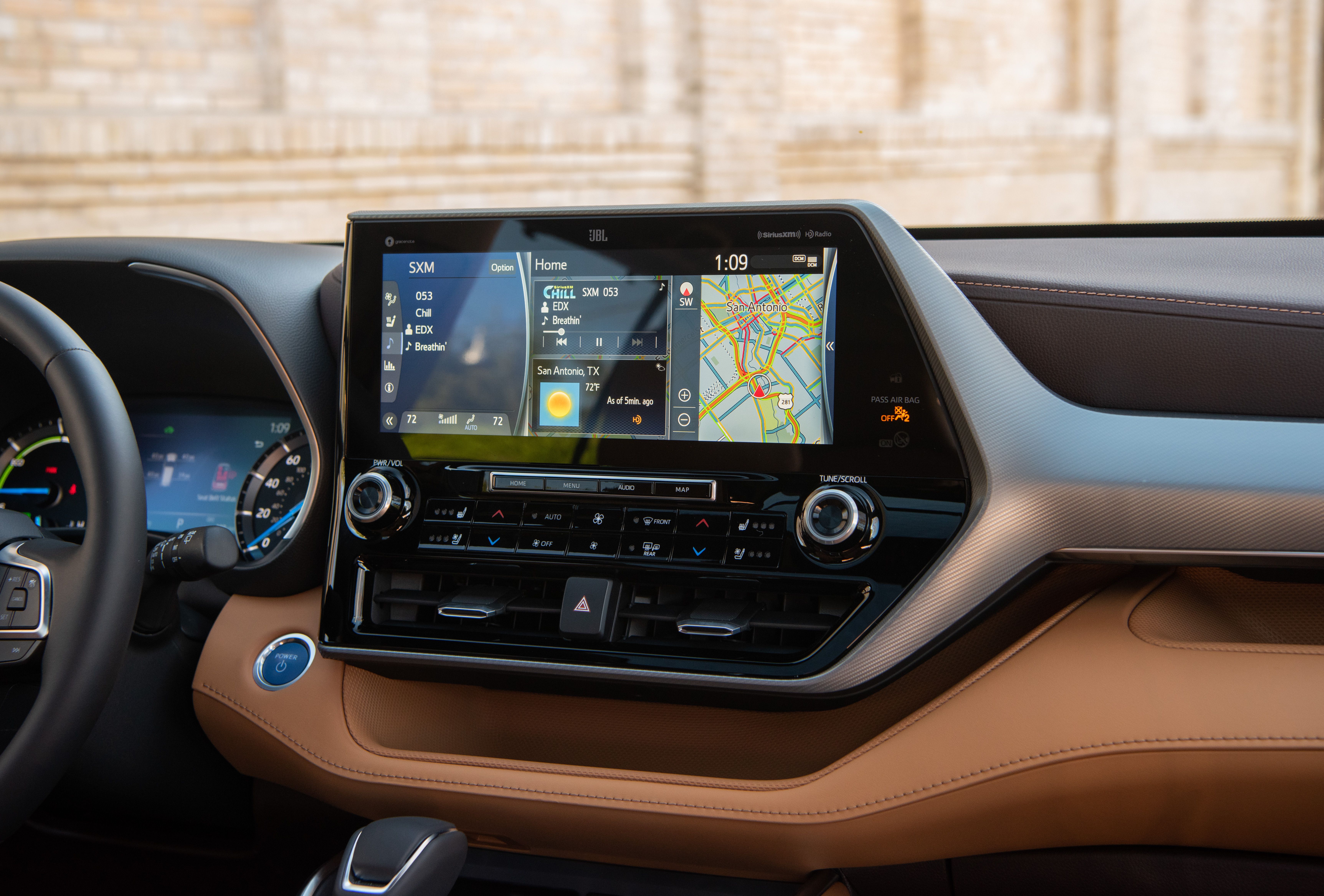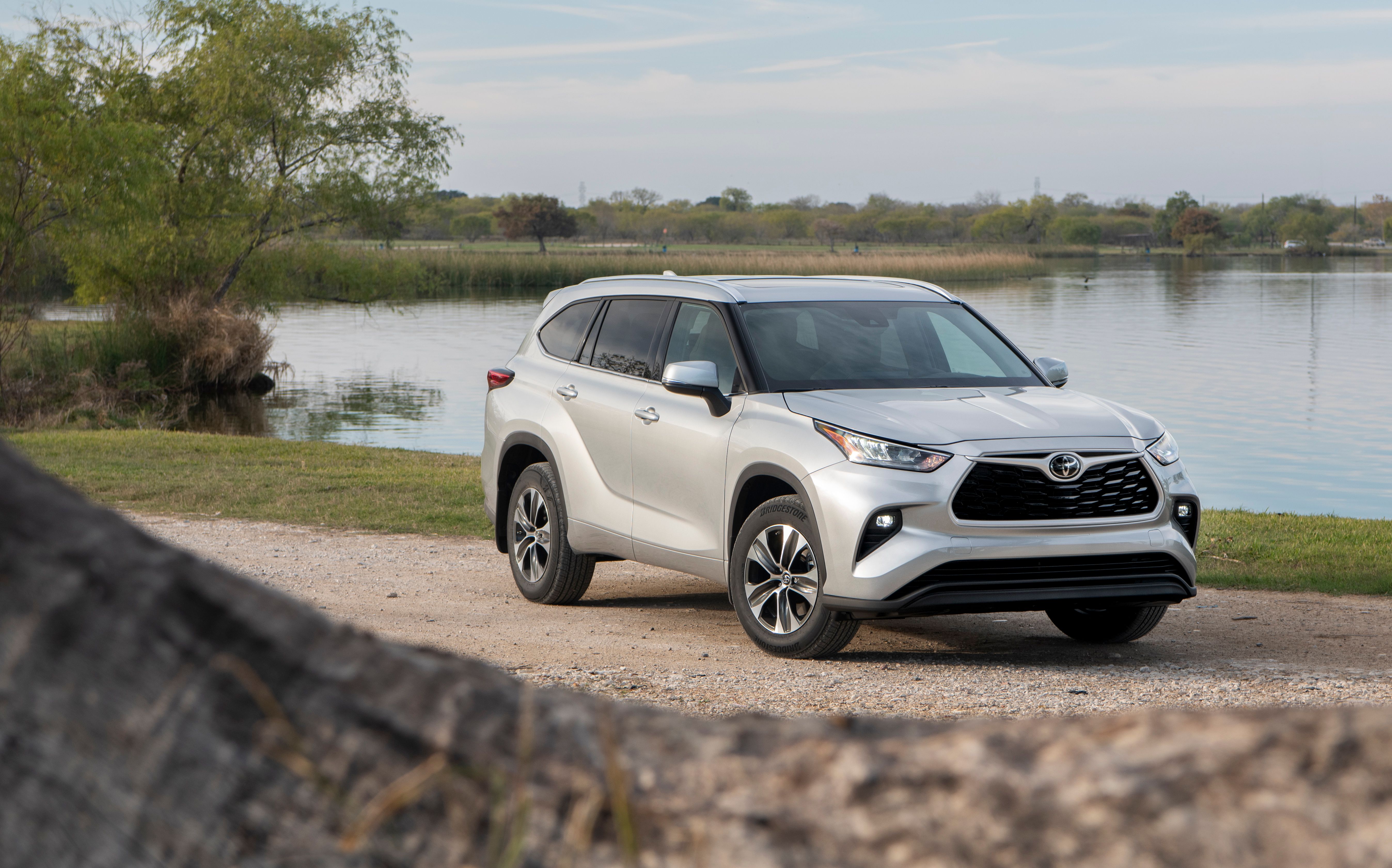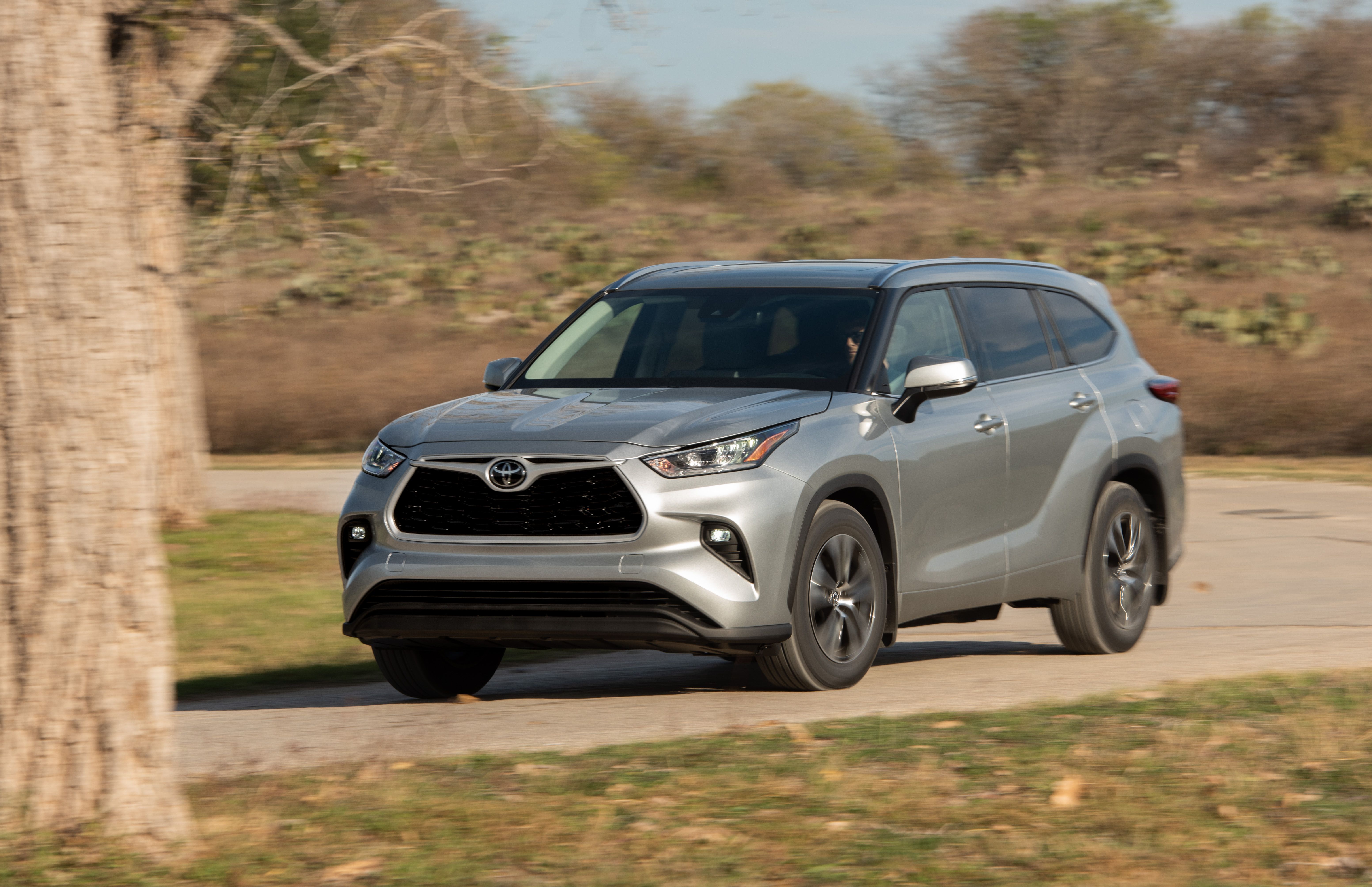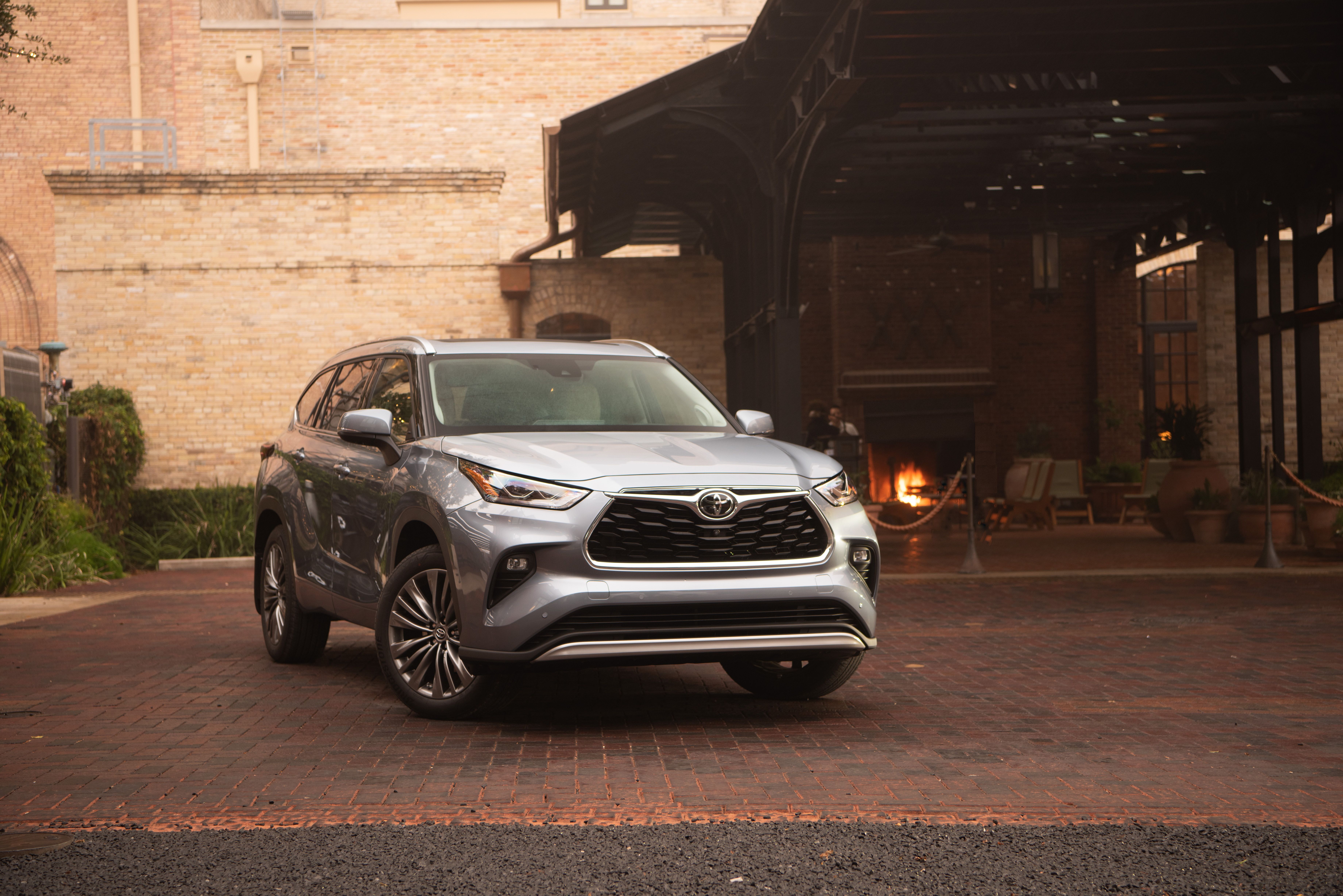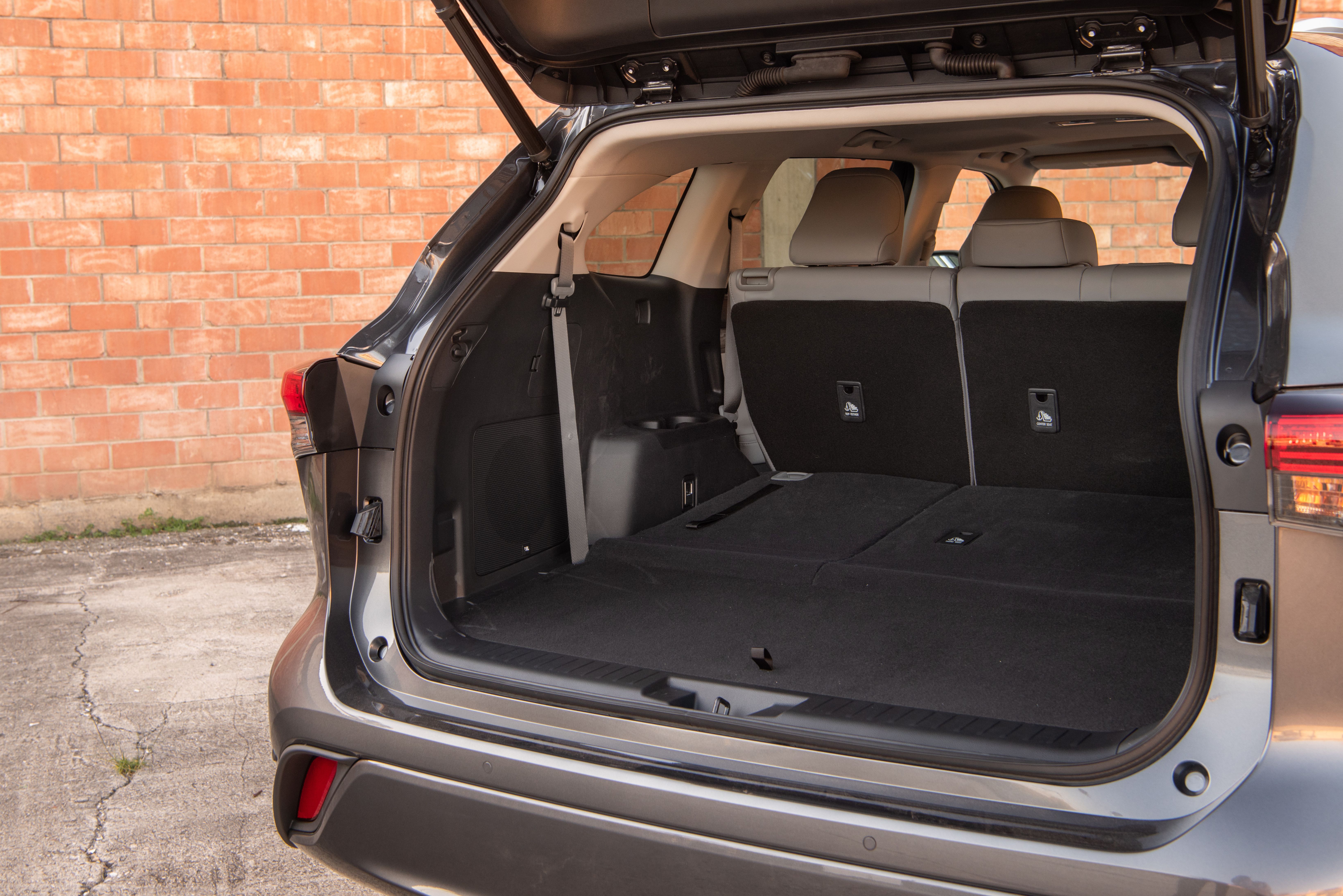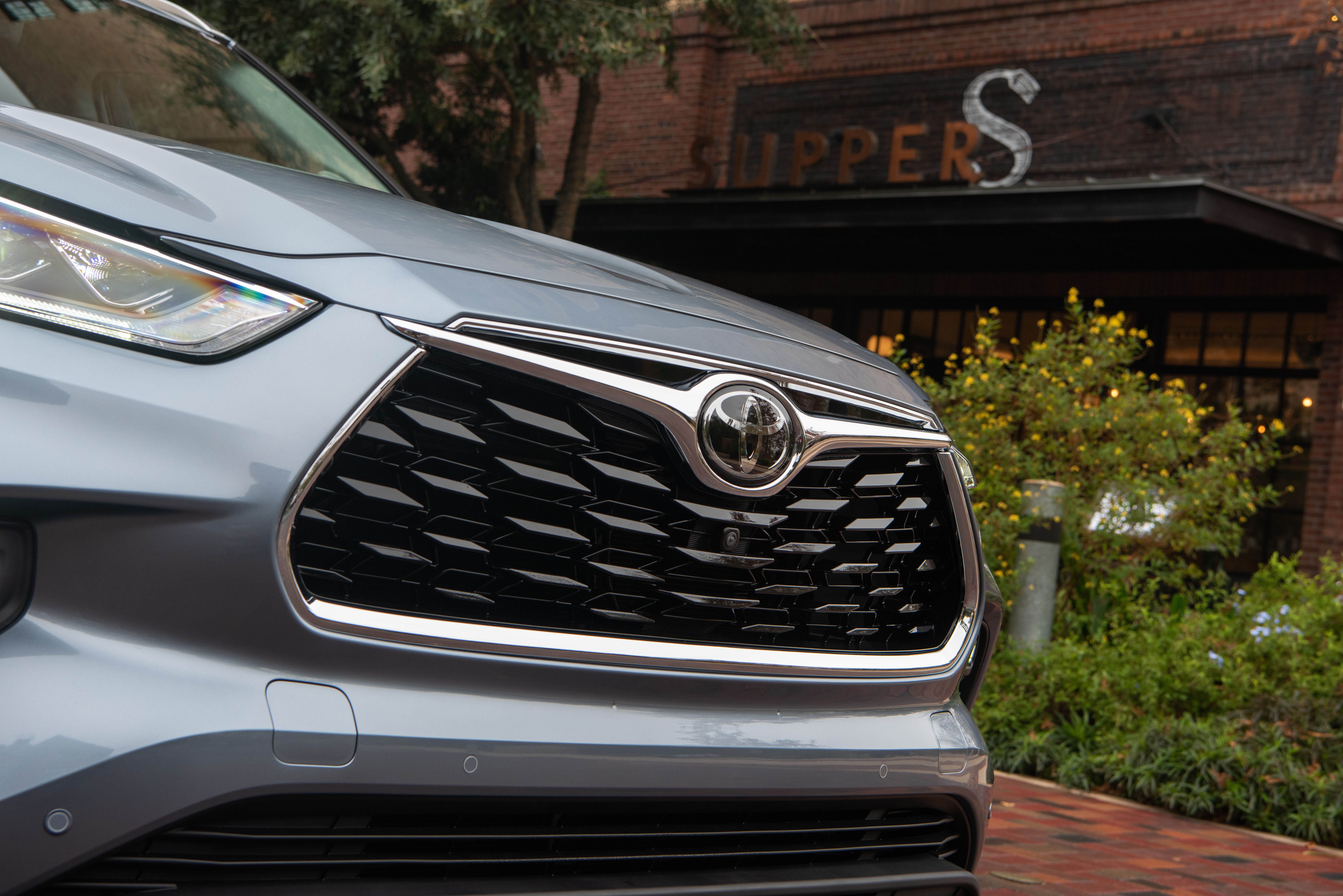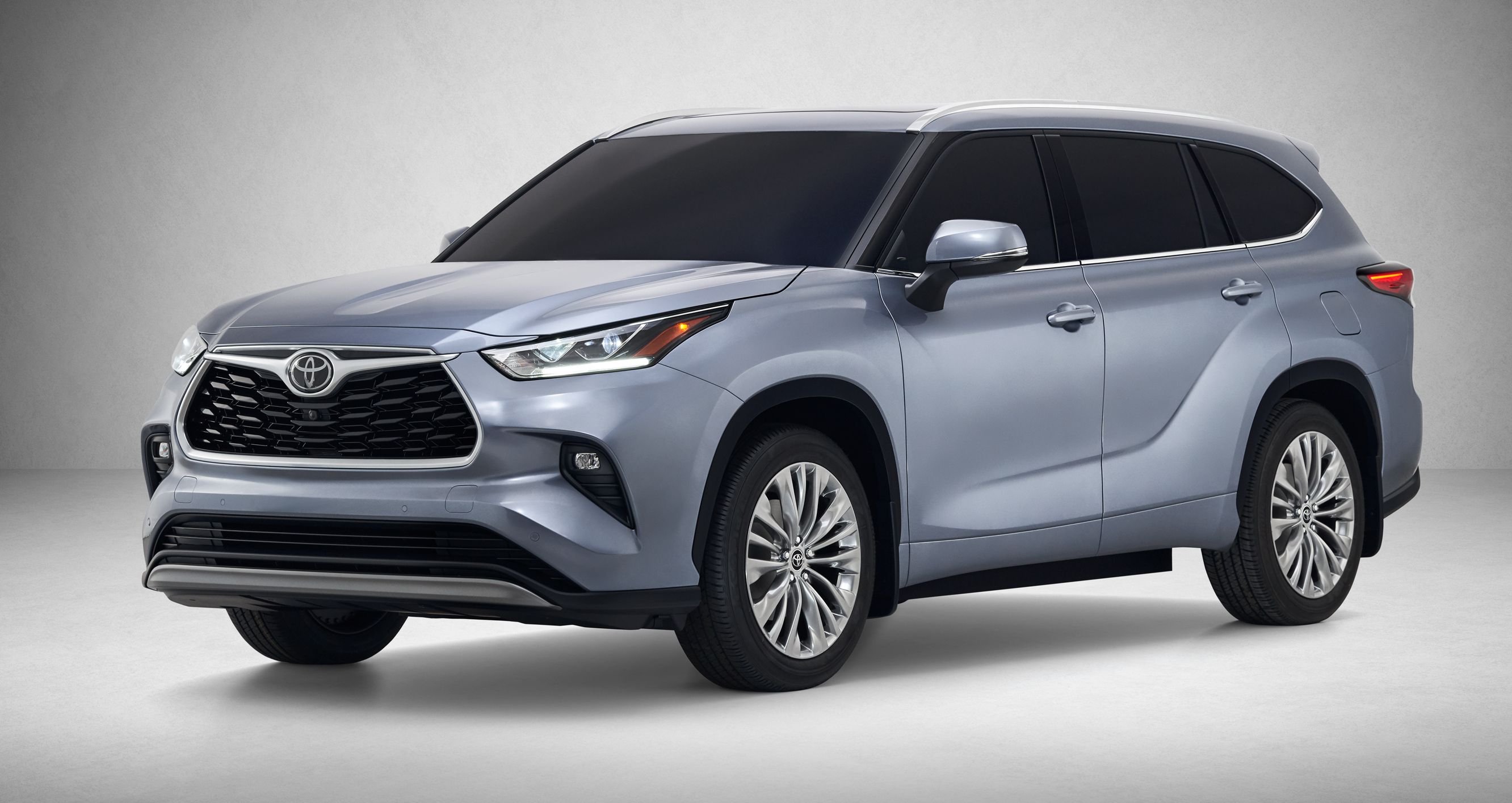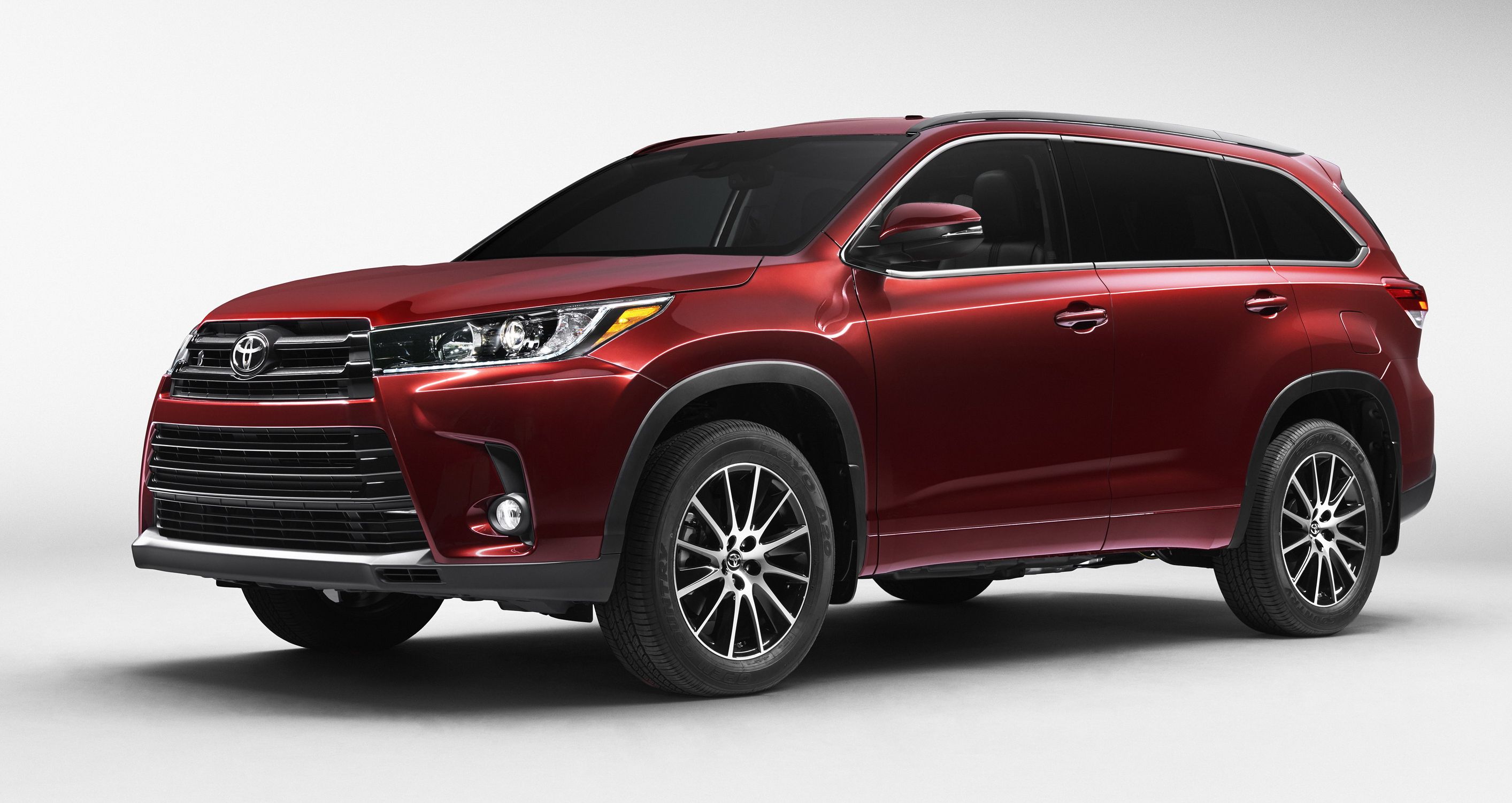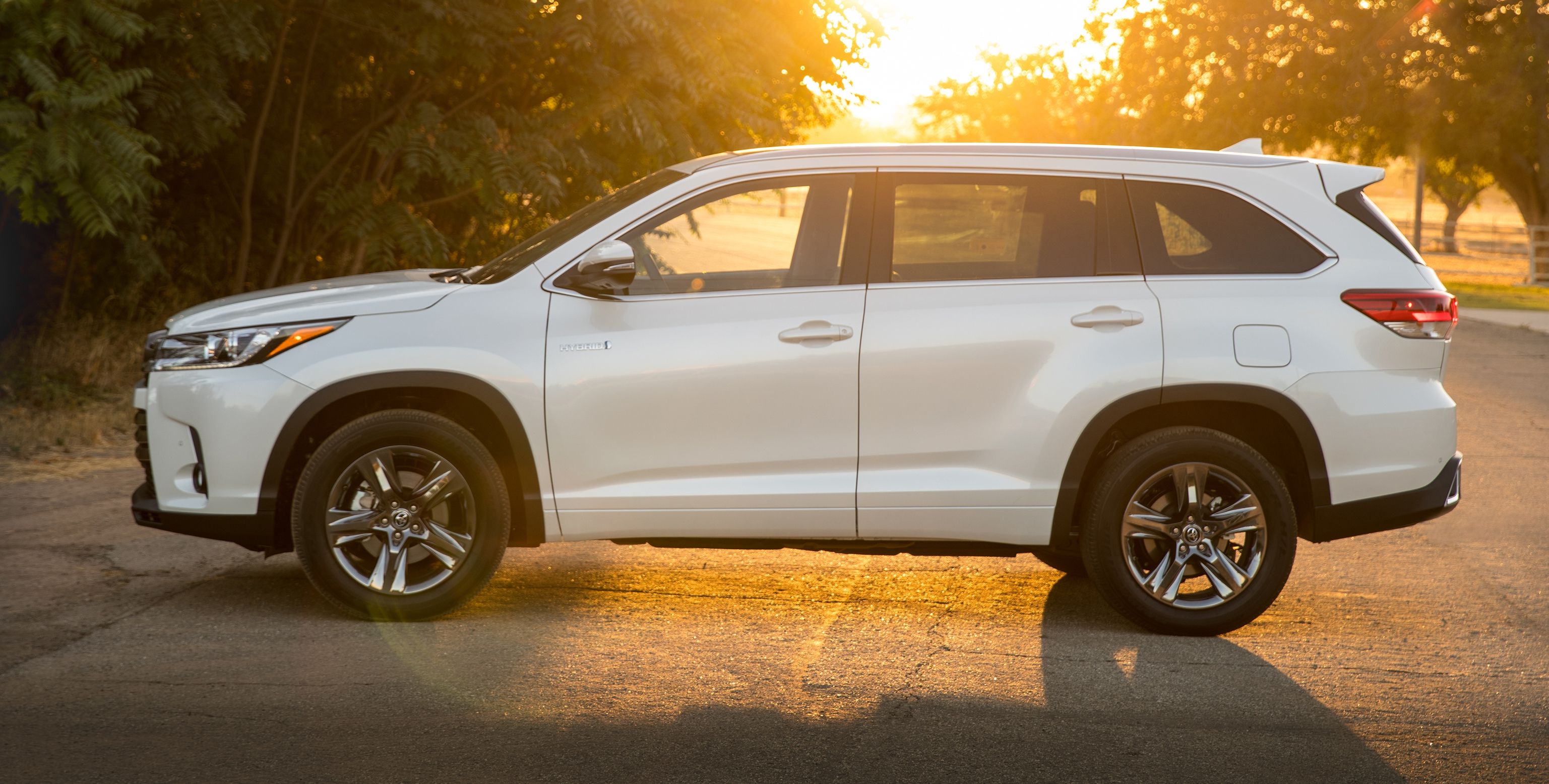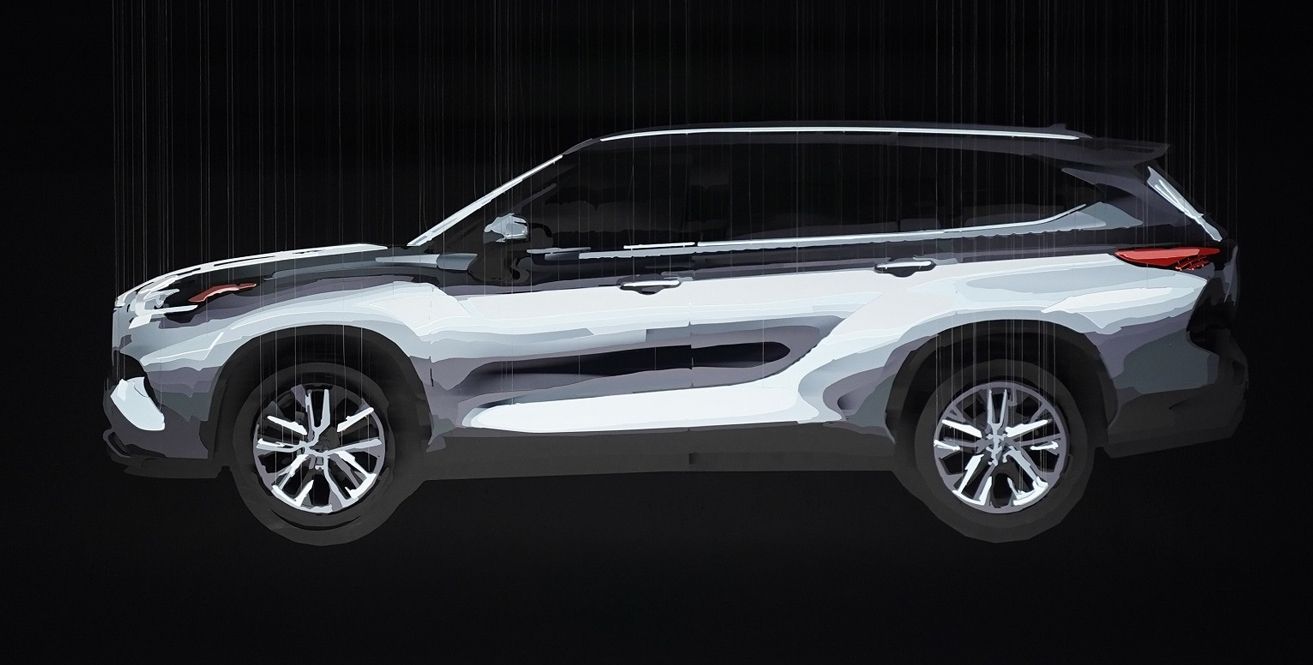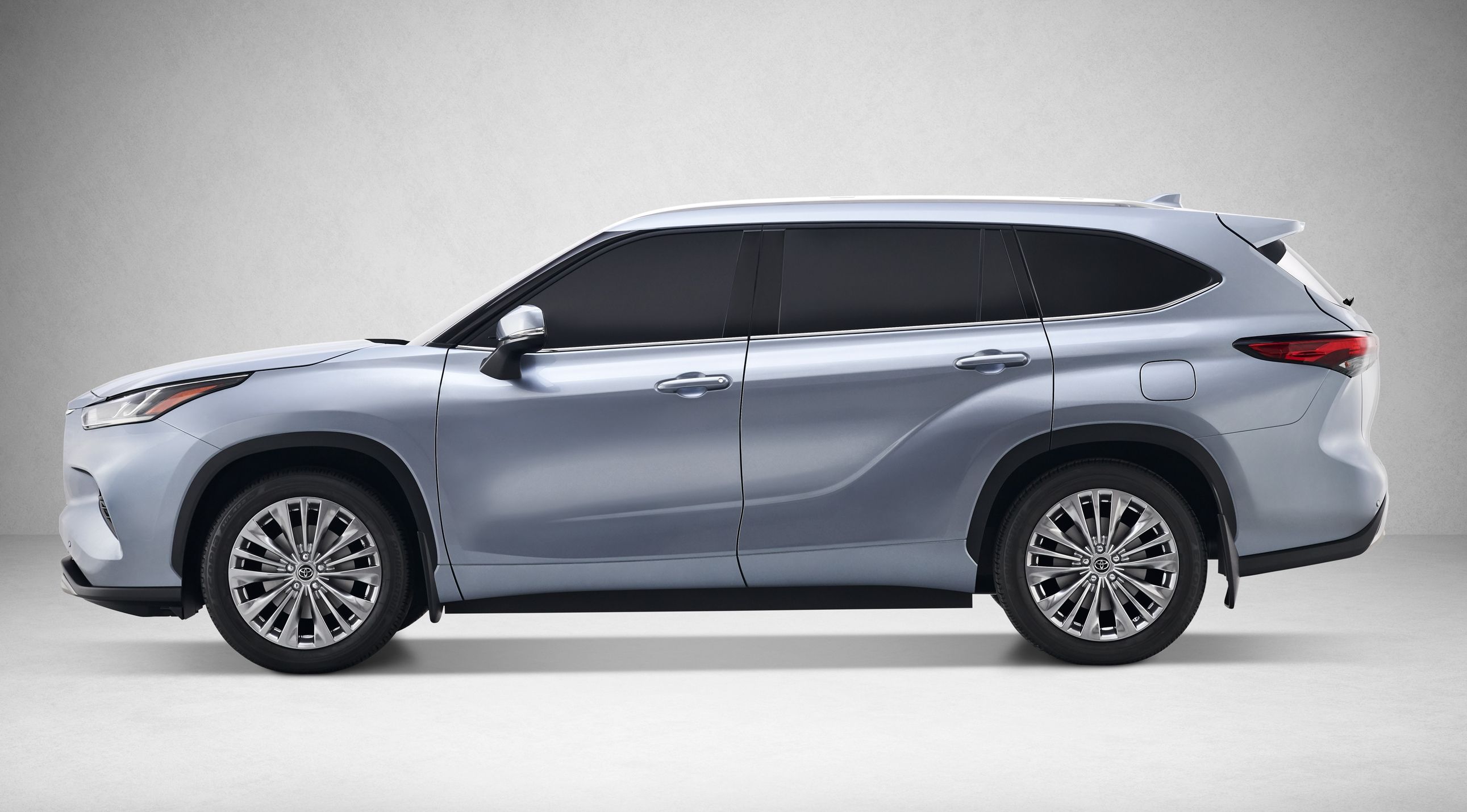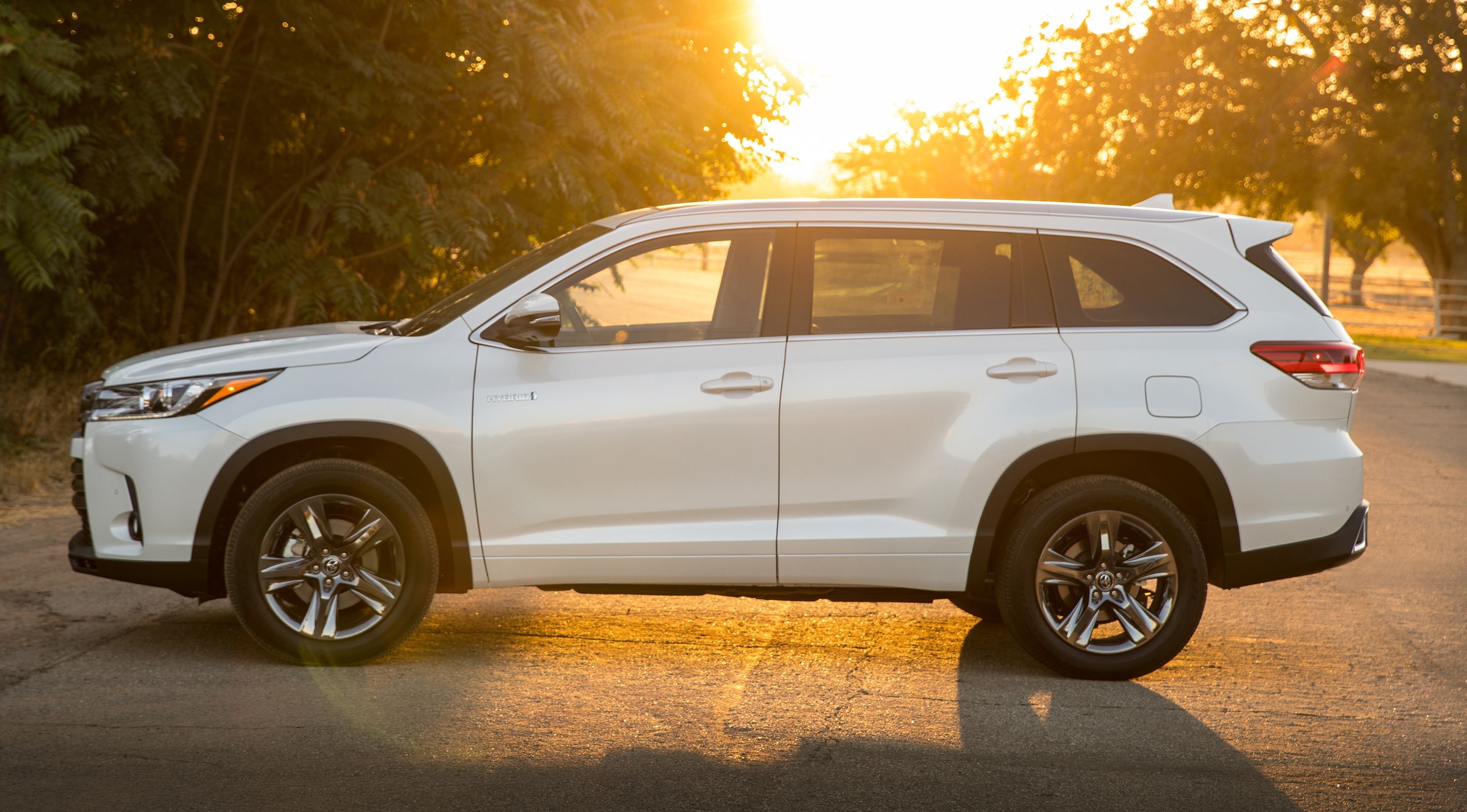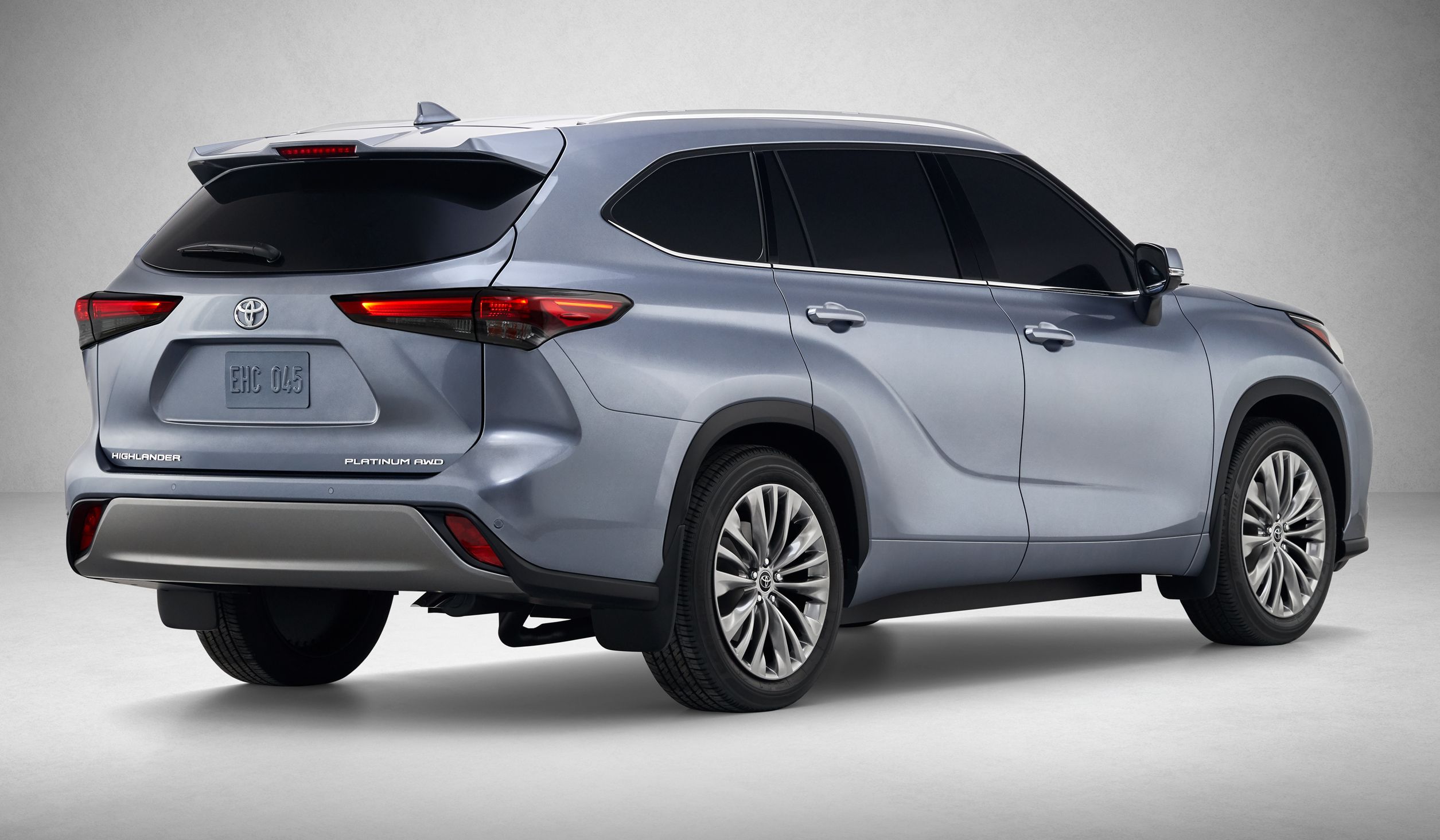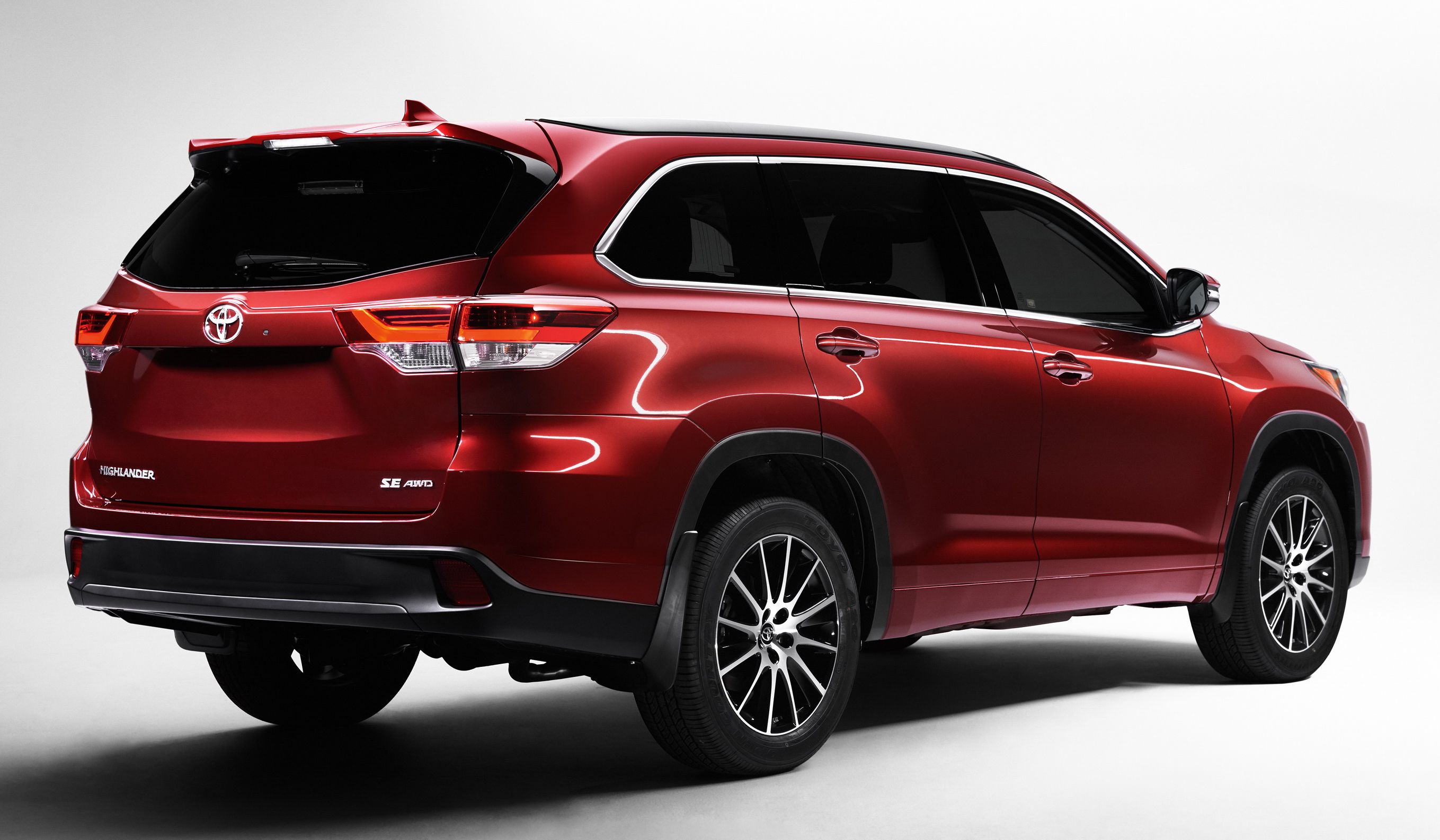The previous third-generation Toyota Highlander debuted back in 2013, with a facelift performed in 2016 that added an eight-speed automatic transmission, an updated spec for the V-6 engine, and a few aesthetic upgrades as well. Since then, the Highlander has proven to be one of the brand’s most-popular nameplates, selling some 245,000 units in 2018. That means it’s time for Toyota to give the Highlander a full-fledged generation update for 2020. Making its big debut at the 2019 New York Auto Show, the latest fourth-generation Toyota Highlander brings new styling inside and out, a raft of fresh technology for infotainment and safety, and a number of powertrain updates as well. However, can it still stay at the top of the segment?
2020 Toyota Highlander
- Make: Array
- Model: 2020 Toyota Highlander
- [do not use] Vehicle Model: Array
<
2020 Toyota Highlander Exterior Styling
|
|
ids=877258,877259 |
no_overlay=false |
before_label=2020 Toyota Highlander |
after_label=2019 Toyota Highlander> |
Up front, the fascia is clear break from the 2019 model year, and includes new headlight housings, a new intake, and a new bumper. Rather than the broad grille slats seen on the previous model, the fourth-generation comes with a singular upper intake section and slim lower intake section. The headlights are also slim, pulling back into the fenders at a sharper angle, while the fog lights in the bumper are moved higher and more towards the center of the bumper. Black plastic undercladding rings the lower chin section.
The roofline and window line are both more aggressive as well, while the side character lines are much more pronounced, flaring out towards the rear, adding additional visual width.
|
|
ids=877262,877263 |
no_overlay=false |
before_label=2020 Toyota Highlander |
after_label=2019 Toyota Highlander> |
In back, the tailgate looks broader and more square, with slimmer taillights and a large lower bumper section. Up top is a rear deck spoiler, while additional black plastic cladding bookends the front and rear.
|
|
ids=877264,877265 |
no_overlay=false |
before_label=2020 Toyota Highlander |
after_label=2019 Toyota Highlander> |
A set of 18-inch wheels come as standard lower in the lineup, as do LED headlights and taillights. The L, LE, and XLE grade levels come with a black grille and silver trim, while the Limited and Platinum grade levels get a black grille and chrome trim, plus a chrome lower rear fascia and projector headlights. The higher trims also get standard 20-inch alloy wheels, which is a first for the nameplate. The top Platinum trim gets a silver front bumper and rear fascia, plus a unique 20-inch wheel design.
Exterior body colors include:
-* Blizzard Pearl
-* Celestial Silver Metallic
-* Midnight Black Metallic
-* Magnetic Gray Metallic
-* Moon Dust
-* Ruby Flare Pearl
-* Blueprint
-* Opulent Amber.
Dimensionally speaking, the Highlander is now 2.36 inches longer than the outgoing model, which enhances the available interior space by allowing the second row seating to slide an extra 1.2 inches forward and back.
For reference, we’ve listed the 2020 Toyota Highlander’s exterior dimensions below:
2020 Toyota Highlander Interior Design
Indeed, the rest of the 2020 Highlander’s look and layout continues this theme of enhanced luxury, which is complemented by a quieter overall ride.
The base model L and lower mid-range LE come with standard cloth upholstery, which is finished in either Graphite or Black. The XLE model steps it up to Softex leatherette finished in Graphite, Black, or Harvest Beige, while the Limited gets leather upholstery, once again in either Graphite, Black, or Harvest Beige. Finally, the Platinum steps it up to embossed and perforated leather, with the optional Glazed Caramel color added alongside the three standard colors listed above.
The base model gets an eight-way power driver’s seat as standard, while a 10-way power driver’s seat can be found higher in the range, as can heated and ventilated front seats. A standard three-row climate control keeps it comfy no matter where you’re seated.
It all starts with standard Apple CarPlay and Android Auto - a first for the Highlander While at first that might not seem like that big of a deal, it kinda is - Toyota has been reluctant to adopt these popular smartphone support systems for years now, so it’s nice to see the automaker finally getting on board with the rest of the industry.
The rest of the infotainment spec includes SiriusXM, Amazon Alexa, and Waze. There’s also available Wi-Fi through AT&T. USB charge ports can be found throughout, while Qi wireless charging is optional. The higher-up Limited and Platinum trim levels get new LED ambient lighting.
Running it all is a new 12.3-inch multimedia display, which Toyota claims as the “largest in the segment.” The 12.3-incher is equipped as standard on the Platinum trim level. Meanwhile, an 8.0-inch screen is standard on the lower trims and arrives as an upgrade over the standard 6.1-inch screen on the outgoing model. The 2020 model year also comes with a 4.2-inch Multi-information Display in the gauge cluster. Options include a heads-up display higher in the range, plus an upgraded JBL Premium Sound System with 11 speakers and 1,200 watts of power.
Per tradition, the Highlander comes with the Toyota Safety Sense 2.0 (TSS 2.0) safety suite as standard. Toyota has been on a roll with this tech over the last few years, and it’s good to see it add to that momentum with the Highlander. Standout features for TSS 2.0 include:
-* Automatic High Beam Headlights
-* Lane Departure Alert with Steering Assist
-* Pre-Collision System with Pedestrian Detection
-* Full-Speed Range Dynamic Radar Cruise Control
There’s also a few new features for 2020, such as Road Sign Assist and Lane Tracing Assist. Additional features can be found higher in the range, and include:
-* Parking Support Braking
-* Blind Spot Monitor with Rear Cross Traffic Alert
-* Intelligent Clearance Sonar
Toyota Safety Connect with a one-year trial subscription is standard across the line, while Service and Remote Connectivity and Dynamic Navigation are equipped higher in the range.
Of course, one of the biggest reasons anyone gets an SUV is extra space for people and things, and the Toyota Highlander provides for both. Passengers will find three rows of seating available, including both seven- and eight-passenger configurations. The lower L and LE trim levels come standard with an eight-passenger configuration, while the XLE, Limited, and Platinum replace the second row with a pair of Captain’s Chairs for a seven-seater layout. Of course, you can replace the Captain’s Chairs with a traditional third row, if desired.
Either way, the second row can fold down to maximize rear cargo room. There’s up to 16.1 cubic-feet found behind the third row, which is on par with rivals like the Honda Pilot, but less than the Subaru Ascent (17.6 cubic-feet) and Ford Explorer (18.2 cubic-feet).
Making the most of what’s there is a 60/40 split for the third row. Fold it flat, and you’ll open up 40.6 cubic-feet of cargo room. Fold down the second row as well and you get 73.3 cubic feet total.
Comparatively speaking, the 2020 Toyota Highlander gets an additional 2.3 cubic feet of cargo room behind the third row against to the 13.8 cubic-feet offered by the 2019 model year, but 1.7 cubic-feet less behind second compared to the 42.3 cubic-feet of the 2019 model year. There’s also 10.4 cubic-feet less cargo room with all rows folded compared to the 83.7 cubic-feet of the 2019 model year.
No word on passenger room, but the outgoing model offered 61.7 cubic-feet, 52.8 cubic-feet, and 30.4 cubic-feet of passenger room for the first-, second-, and third-rows.
2020 Toyota Highlander Drivetrain And Performance
Let’s start with the V-6, which is the same naturally aspirated 3.5-liter unit as before. Output remains static at 295 horsepower and 263 pound-feet of torque, all of which is directed through a Direct Shift eight-speed automatic transmission. The eight-speed is the only transmission option, as the outgoing model’s six-speed is now in the dustbin.
Moving on, the Highlander also comes with a hybrid option, which incorporates a 2.5-liter four-cylinder internal-combustion gas engine and two electric motors. Combined total output comes to 240 horsepower. The hybrid’s battery is mounted under the rear seats, and does not impact cargo room or passenger room.
Both models get multiple drive modes, but the hybrid includes a unique EV mode for all-electric operation to cover short distances at low speeds. The hybrid also comes with a driving “coach” which can help you get the biggest bang for your buck at the pump thanks to guided accelerator function inputs.
Finally, the Predictive Efficient Drive system works in the background by analyzing your driving habits, as well as the current road conditions and traffic conditions, then deploys the hybrid power as needed.
All these tweaks give the Highlander hybrid best-in-class fuel returns, with a combined 34 mpg. That’s an improvement of 17 percent compared to the outgoing Highlander’s 28 mpg.
Meanwhile, the gas-only model returns a combined 22 mpg, a figure padded by the standard engine stop/start system. That’s still far above the 18 mpg combined offered by the Ford Explorer, and about on par with the 21 mpg combined offered by the Chevrolet Traverse and 23 mpg combined offered by the Subaru Ascent.
Both the hybrid and gas engine options come with the option for all-wheel drive. Toyota offers a unique all-wheel drive system depending on your powertrain of choice, including two separate systems for gas-powered models, and a unique system for the hybrid that places an electric motor in the rear for independent drive of the rear wheels.
Highlander models with a V-6 and all-wheel drive also come with a Driveline Disconnect feature for even more efficiency, turning the all-wheel drive system into front-wheel drive when the extra traction isn’t needed, contributing to that 22 mpg noted above. The system will then automatically reengage the all-wheel drive system when it’s needed. Further options include the available Dynamic Torque Vectoring All-Wheel Drive system, which is offered on the Limited and Platinum trim levels.
When the going gets dirty, there’s also a Multi Terrain Select system for better grip off road, including modes like Mud & Sand, plus Rock & Dirt. Further rough-stuff prowess comes with high-tech features like Hill Start Assist Control and Downhill Assist Control.
Under the skin is a new TNGA-K platform, which is stiffer than that of the outgoing model, providing a ride that’s quieter and smoother than before. The suspension setup includes struts up front and a multi-link in the rear.
2020 Toyota Highlander Prices
After a long wait, the 2020 Toyota Highlander is finally on sale and it kicks of at $34,600 for the entry-level L trim with front-wheel drive. If you opt for AWD, you’ll be asked to pony up an extra $1,600 for a total MSRP of $36,200. Pricing moves up incrementally through the trim levels, which now include the LE, XLE, Limited, and Platinum. Each of the four upper trim levels can be had with either FWD or AWD, and are also available as a hybrid in a FWD or AWD configuration.
What is the Cheapest Toyota Highlander?
If you opt for the Toyota Highlander L trim in FWD, you’ll get the lowest MSRP possible. Even if you equip the L with AWD and pay $36,200, you’ll still be $600 shy of the FWD LE trim, which starts at $36,800.
What is the Most Expensive Toyota Highlander
If you’re looking for the absolute best, you need to go for the Toyota Highlander Platinum. It starts out at $46,850 in FWD form (this is actually $150 less than Limited Hybrid AWD) but the Platinum Hybrid AWD will set you back a cool $50,200 before options, taxes, and destination charges.
2020 Toyota Highlander Competition
Ford Explorer
The Explorer is one of the biggest names in the SUV segment, and that extends to the latest 2020 model year. Offered as an all-new sixth generation, the Explorer looks the part thanks to a tall, off-road-inspired stance and wheel sizing up to 21 inches in diameter. The interior comes with an 8.0-inch touchscreen and 12.3-inch digital gauge cluster, plus the very latest driver assist tech, while an Active Noise Cancellation system makes it all feel high-end and premium. Engine options include a 2.3-liter four-cylinder and 3.0-liter V-6, with rear-wheel drive as standard and four-wheel drive as an available option.
Read our full review on the 2020 Ford Explorer.
Subaru Ascent
Subaru is getting in on the three-row SUV craze with the new Ascent, following up on the not-so-popular Tribeca with a clean-slate approach and fresh nameplate. Outside, the Ascent certainly looks better than the model it replaced, with wheel sizing up to 20-inches in diameter and an impressive 8.7 inches of ground clearance.The interior swallows tons of stuff as well, with as much as 153.5 cubic-feet of cargo room behind the front row. A 6.5-inch touchscreen is standard, while an 8.0-inch screen is optional. Motivation is sourced from a turbocharged 2.5-liter four-cylinder producing 260 horsepower and 277 pound-feet of torque, which hits the pavement through a standard all-wheel drive system.
Read our full review on the 2019 Subaru Ascent.
Final Thoughts
With so much competition flowing in from everywhere in the segment, the 2020 Toyota Highlander obviously needs to bring the heat to continue on as a best-selling nameplate. However, generally speaking, we think Toyota is on the right track.
For starters, the 2020 model year looks quite a bit better than the outgoing model. We like the 2020’s simplified front fascia a lot more than the over-designed fascia on the 2019 model year, and the new model’s interior layout feels equally sleek and streamlined.
Critically, the Highlander’s fresh tech is on the money, providing solid infotainment and safety features across the line. Updates like standard Apple CarPlay and Android Auto also help bring the Highlander in line with the competition.
The hybrid definitely makes the Highlander standout, offering impressive mpg you won’t find anywhere else.
However, nothing is perfect, and neither is the 2020 Toyota Highlander. For example, the cargo space is a bit lackluster, even losing a few cubic-feet compared to the outgoing model.
That said, the Highlander is still a solid offering in the segment, and you can’t fault Toyota for staying true to the formula.


